Search Result
Results for "
assemblies
" in MedChemExpress (MCE) Product Catalog:
7
Biochemical Assay Reagents
3
Isotope-Labeled Compounds
| Cat. No. |
Product Name |
Target |
Research Areas |
Chemical Structure |
-
- HY-106008
-
|
BAL27862
|
Microtubule/Tubulin
|
Cancer
|
|
Avanbulin (BAL27862) is a potent, Colchicine site-binding, tubulin assembly inhibitor. Avanbulin inhibits tubulin assembly at 37 °C with an IC50 of 1.4 μM. Avanbulin binds to tubulin with an apparent Kd value of 244 nM. Avanbulin can be used for the research of cancer and cell division .
|
-
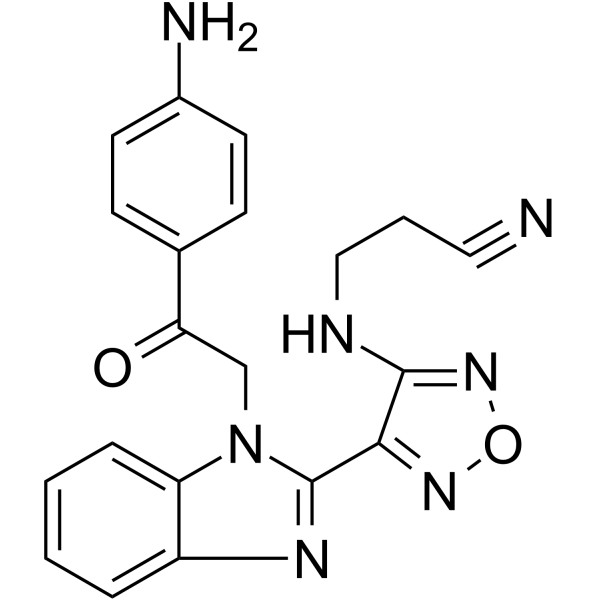
-
- HY-120890
-
|
|
Microtubule/Tubulin
|
Cancer
|
|
3,4',5-Trismethoxybenzophenone (compound 16a) is a potent tubulin assembly inhibitor with an IC50 value of 2.6 µM .
|
-
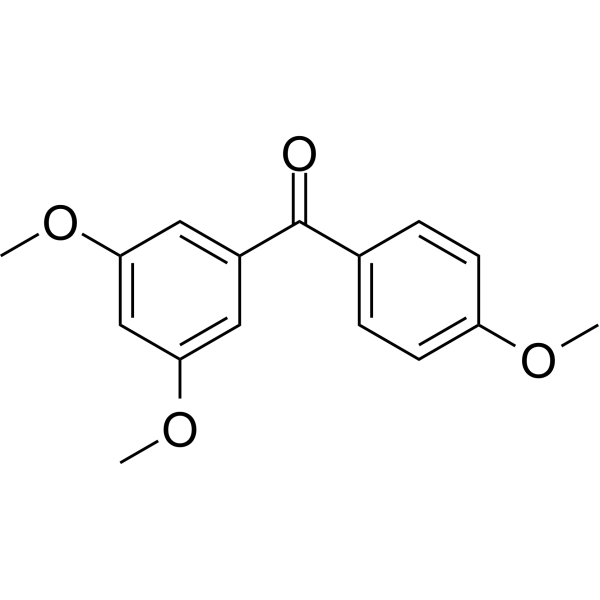
-
- HY-144322
-
|
|
HBV
|
Infection
|
|
HBV-IN-18 (Compound 3) is an HBV capsid assembly modulator (CpAM) with an EC50 of 2790 nM .
|
-
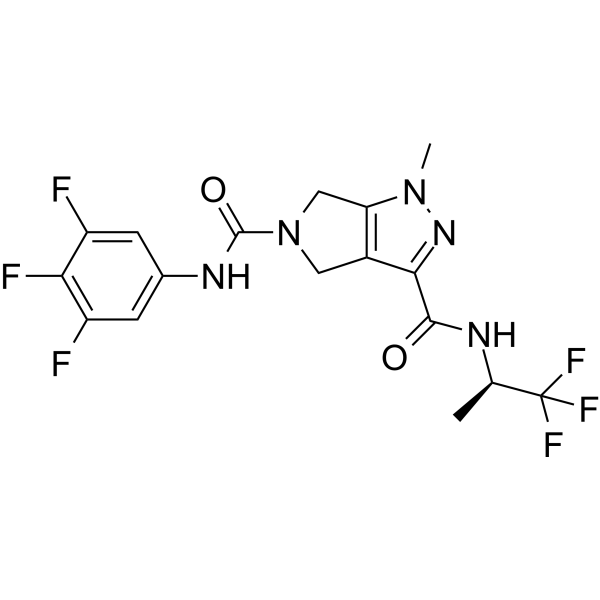
-
- HY-155045
-
|
|
TMV
|
Infection
|
|
TMV-IN-6 (Compound 4g) is a novel antiviral and fungicidal agent. TMV-IN-6 inhibits virus assembly by binding totobacco mosaic virus (TMV) CP and interfere with the assembly process of TMV CP and RNA .
|
-
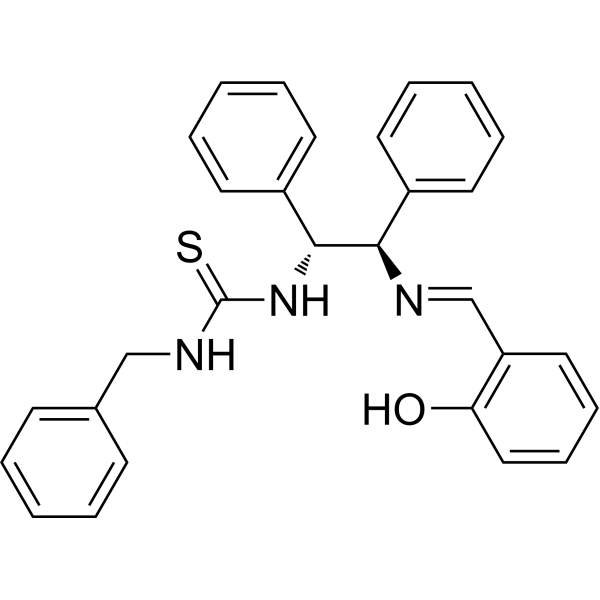
-
- HY-144319
-
|
|
HBV
|
Infection
|
|
SHR5133 is a highly potent, orally active HBV capsid assembly modulator. SHR5133 displays HBV DNA reduction (EC50=26.6 nM) .
|
-
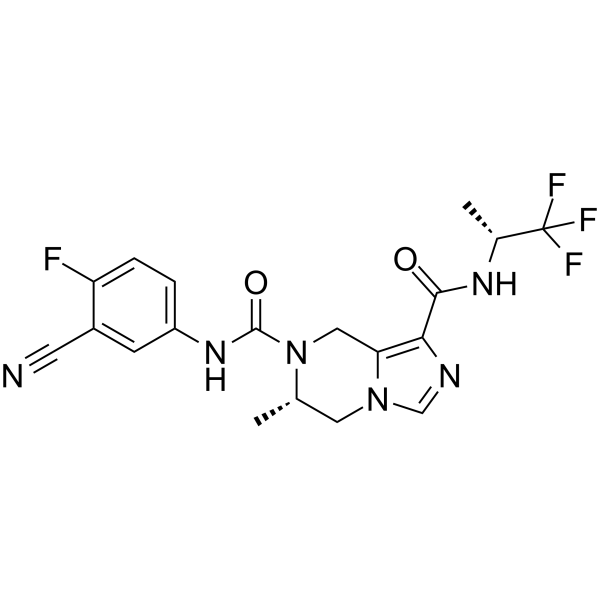
-
- HY-14934
-
|
STA 5312
|
Microtubule/Tubulin
|
Cancer
|
|
Rosabulin (STA 5312) is a potent and orally active microtubule inhibitor that inhibits microtubule assembly. Rosabulin has broad-spectrum anti-tumor activity .
|
-
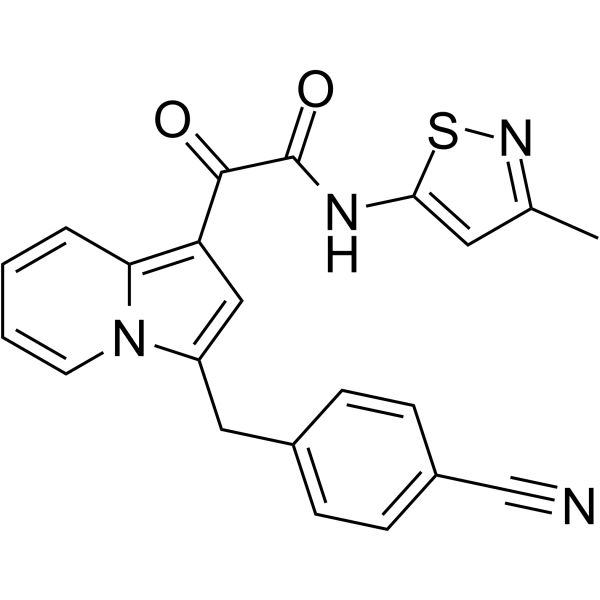
-
- HY-144320
-
|
|
HBV
|
Infection
|
|
HBV-IN-17 (compound 8) is a potent HBV capsid assembly modulator with an EC50 of 511 nM .
|
-
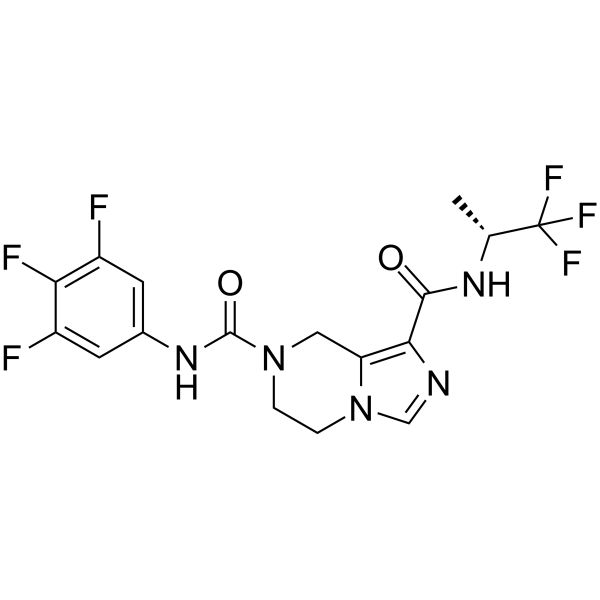
-
- HY-112763
-
|
|
Liposome
|
Inflammation/Immunology
|
|
CLinDMA, a cationic lipid, can cause inflammatory response. CLinDMA can be used for the synthesis LNP201. LNP201 is a liposome assembly for systemic delivery of siRNA .
|
-
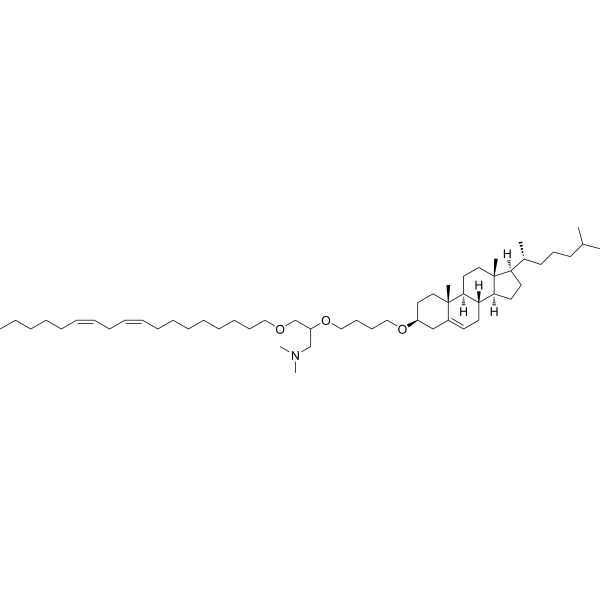
-
- HY-145871
-
|
|
HBV
|
Infection
|
|
BA38017 is a potent HBV core protein assembly modulator. BA38017 inhibits HBV replication with an EC50 of 0.20 μM .
|
-
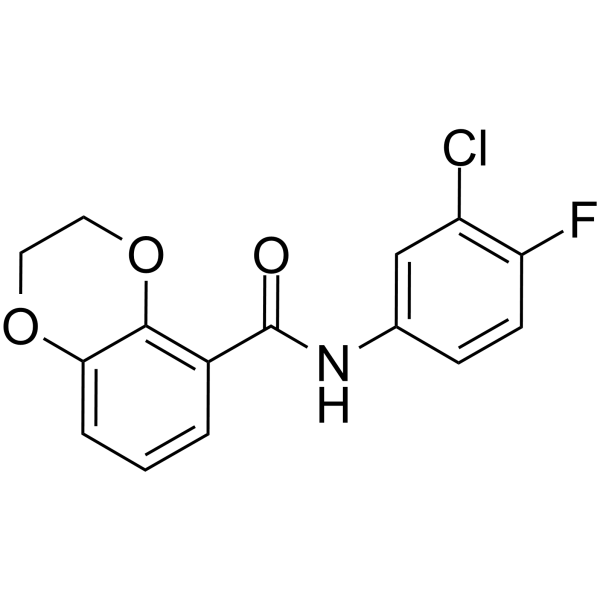
-
- HY-P4192
-
|
|
ADC Linker
|
Cancer
|
|
Fomc-Gly-Gly-Phe-Gly-OH (compound D5) can be used as an intermediate in the synthesis of ADC dual-drug-linker. Fomc-Gly-Gly-Phe-Gly-OH synthetic intermediate GGFGE further forms an important ADC dual-drug link assembly unit .
|
-

-
- HY-W073524
-
|
|
Fluorescent Dye
|
Cancer
|
|
DFAME is a red fluorophore (Ex=508 nm, Em=641 nm). Beetroot and Corn are dimeric fluorogenic RNA aptamers that can bind to DFAME to form Beetroot-DFAME (Kd=460nM) and Corn-DFAME (Kd= 3600nM). Beetroot-DFAME (Kd=460nM) and Corn-DFAME can be used to form RNA assemblies in living cells. Creating RNA assemblies can be used for the study of RNA Nanostructures. DNA/RNA Nanostructures would be useful in cell and gene therapy (CGT) research .
|
-
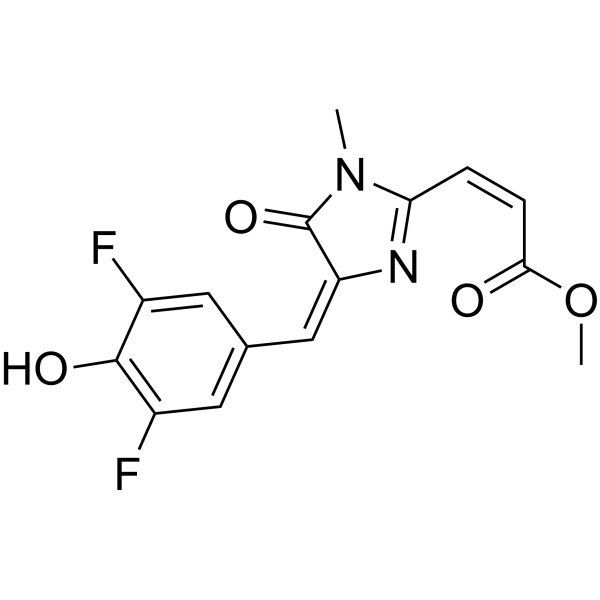
-
- HY-120722
-
TCH-165
1 Publications Verification
|
Proteasome
|
Cancer
|
|
TCH-165 is a small molecule modulator of proteasome assembly, which increases 20S levels and facilitates 20S-mediated protein degradation .
|
-
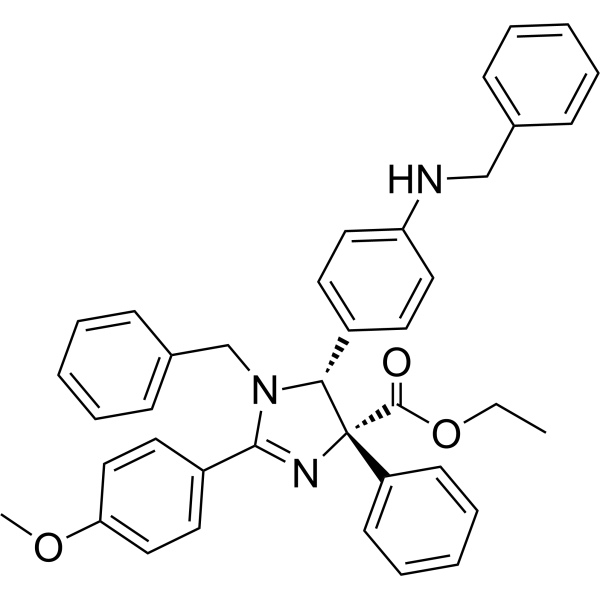
-
- HY-124600
-
|
|
HBV
|
Infection
|
|
NVR 3-778 is a first-in-Class and oral bioavailable HBV CAM (capsid assembly modulator) belonging to the SBA (sulfamoylbenzamide) class, with anti-HBV activity .
|
-

-
- HY-124712
-
|
|
Bacterial
|
Infection
|
|
Divin, a potent chelator of iron, is a potent inhibitor of bacterial cell division with bacteriostatic effect in Gram-negative and Gram-positive bacteria. Divin disrupts the assembly of late division proteins, reduces peptidoglycan remodeling at the division site, and blocks compartmentalization of the cytoplasm .
|
-
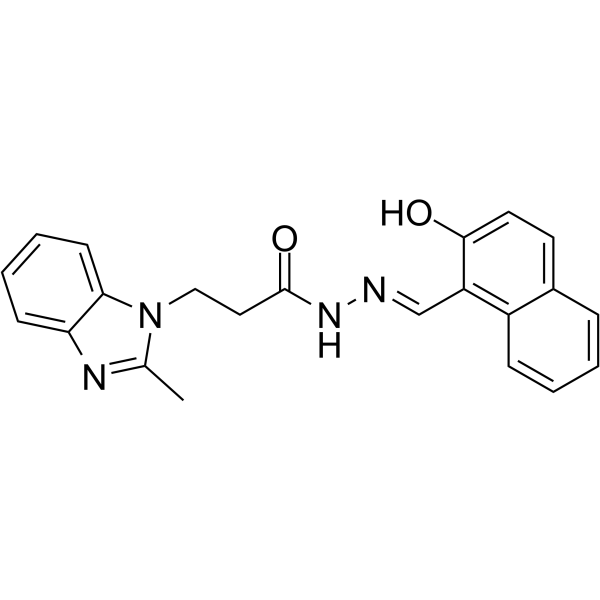
-
- HY-W127703
-
|
|
Fluorescent Dye
|
Others
|
|
Octadecyl Rhodamine B chloride is a cationic amphiphile that can be used for staining cell membranes. Octadecyl Rhodamine B chloride can be used in numerous studies including electronic energy transfer in organized molecular assemblies, membrane structure, and distances of closest approach between protein domains and membranes .
|
-
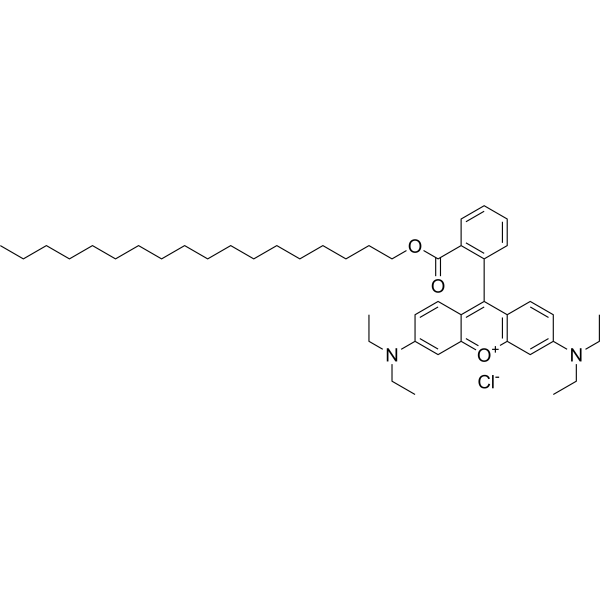
-
- HY-N7654
-
|
|
Apoptosis
|
Cancer
|
|
(-)-Epipodophyllotoxin (2) is an antiproliferative agent against cancer cells isolated from American mayapple Podophyllum peltatum, with GI50s of 0.36 and 0.24 μM in HeLa cells and MCF-7 cells, respectively. (-)-Epipodophyllotoxin can inhibit mitotic spindle assembly in vitro .
|
-
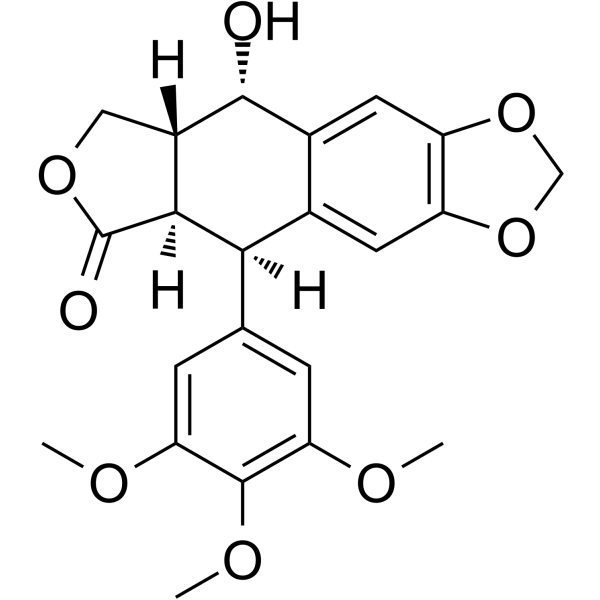
-
- HY-113061
-
-
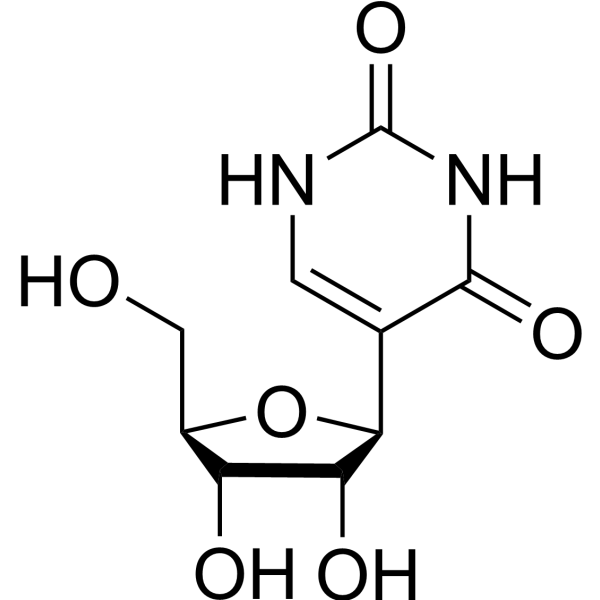
-
- HY-106443A
-
|
BRX-220
|
HSP
|
Neurological Disease
Metabolic Disease
Inflammation/Immunology
|
|
Arimoclomol maleate (BRX-220) is a co-inducer of heat shock proteins (HSP) . Arimoclomol protects motor neurons by enhancing Hsp expression, thus directly affecting protein aggregation and clearance of misfolded assemblies via the proteasome-ubiquitin system .
|
-
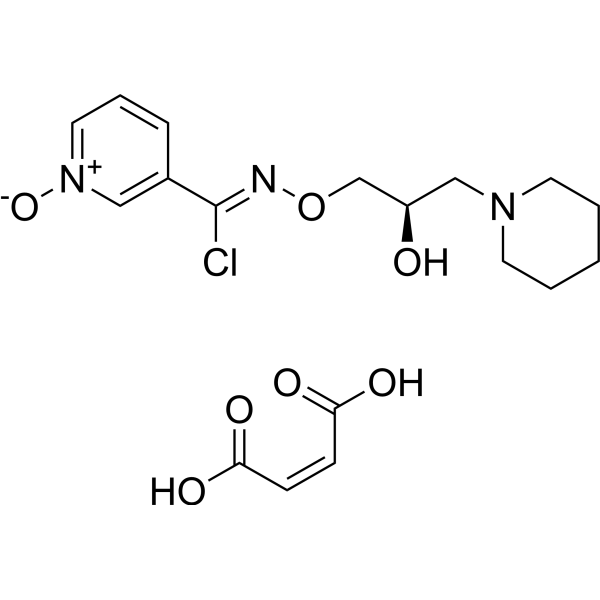
-
- HY-147888
-
|
|
Microtubule/Tubulin
|
Cancer
|
|
Tubulin inhibitor 29 (compound 3c) is a potent tubulin inhibitor with an IC50 value of 1.2 µM. Tubulin inhibitor 29 shows antiproliferative effects with an IC50 value of 7.5 µM for MCF-7 cells. Tubulin inhibitor 29 inhibits tubulin assembly and bounds in the colchicine site .
|
-
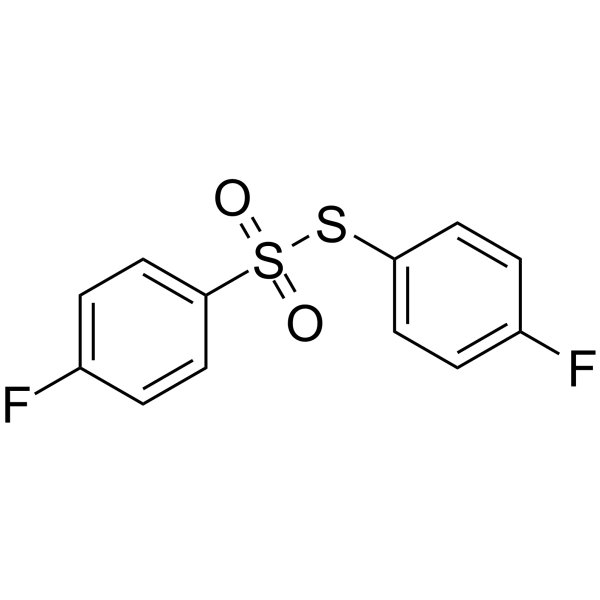
-
- HY-106443
-
|
BRX-220 free base
|
HSP
|
Neurological Disease
Metabolic Disease
Inflammation/Immunology
|
|
Arimoclomol (BRX-220 free base) is a co-inducer of heat shock proteins (HSP) . Arimoclomol protects motor neurons by enhancing Hsp expression, thus directly affecting protein aggregation and clearance of misfolded assemblies via the proteasome-ubiquitin system .
|
-
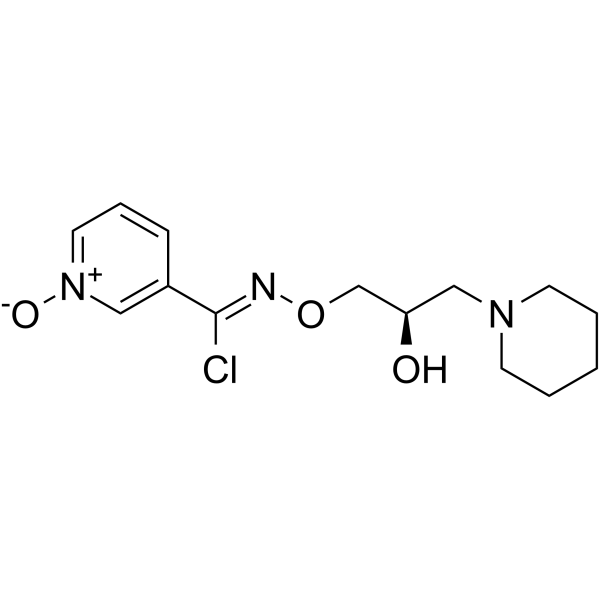
-
- HY-106443B
-
|
BRX-220 citrate
|
HSP
|
Neurological Disease
Metabolic Disease
Inflammation/Immunology
|
|
Arimoclomol citrate (BRX-220 citrate) is a co-inducer of heat shock proteins (HSP) . Arimoclomol citrate protects motor neurons by enhancing Hsp expression, thus directly affecting protein aggregation and clearance of misfolded assemblies via the proteasome-ubiquitin system .
|
-
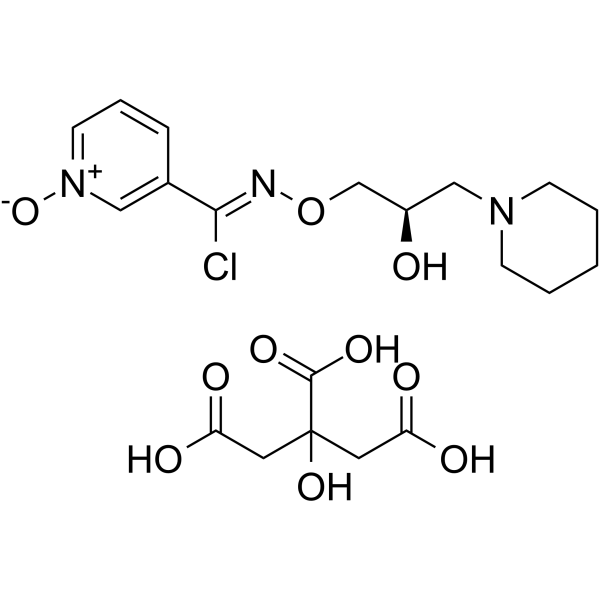
-
- HY-113061S
-
-
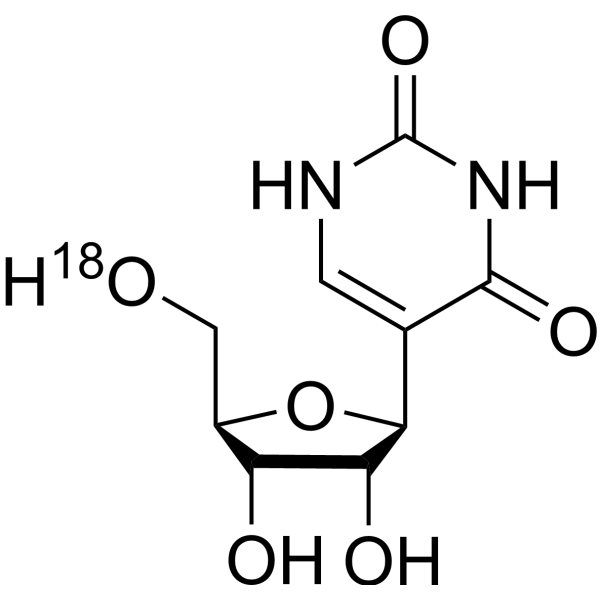
-
- HY-B0200
-
|
Cefalexin; Cephacillin
|
Penicillin-binding protein (PBP)
Antibiotic
Bacterial
|
Infection
Cancer
|
|
Cephalexin (Cefalexin) is a potent, orally active semisynthetic cephalosporin antibiotic with a broad antibacterial spectrum. Cephalexin has antibacterial activity against a wide variety of gram-positive and gram-negative bacteria. Cephalexin targets penicillin-binding proteins (PBPs) to inhibit bacterial cell wall assembly. Cephalexin is used for the research of pneumonia, strep throat, and bacterial endocarditis, et al .
|
-
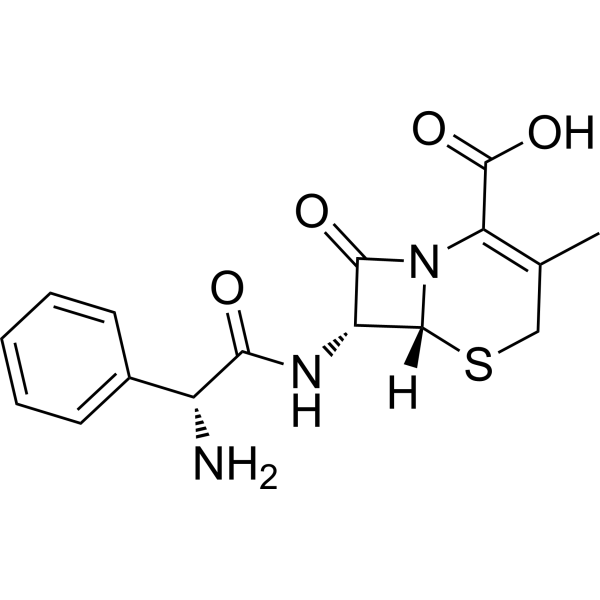
-
- HY-B0200A
-
|
Cefalexin hydrochloride; Cephacillin hydrochloride
|
Penicillin-binding protein (PBP)
Bacterial
Antibiotic
|
Infection
Cancer
|
|
Cephalexin (Cefalexin) hydrochloride is a potent, orally active new semisynthetic cephalosporin antibiotic with a broad antibacterial spectrum. Cephalexin (Cefalexin) hydrochloride has antibacterial activity against a wide variety of gram-positive and gram-negative bacteria. Cephalexin (Cefalexin) hydrochloride targets penicillin-binding proteins (PBPs) to inhibit bacterial cell wall assembly. Cephalexin (Cefalexin) hydrochloride is used for the research of pneumonia, strep throat, and bacterial endocarditis, et al .
|
-
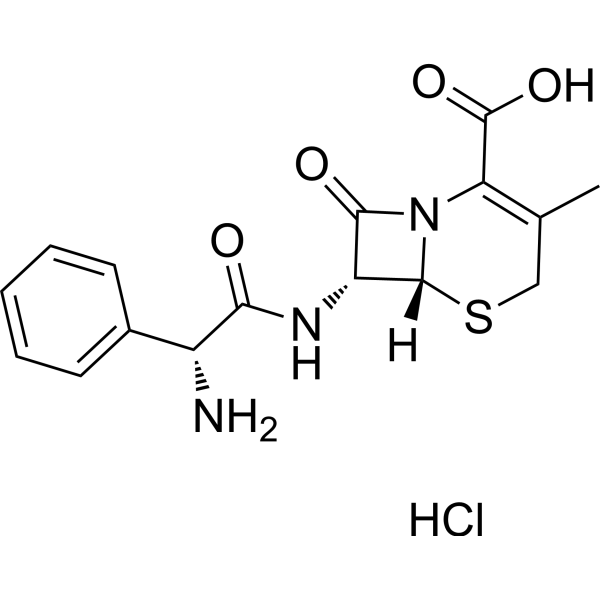
-
- HY-B0200B
-
|
Cefalexin hydrate; Cephacillin hydrate
|
Penicillin-binding protein (PBP)
Antibiotic
Bacterial
|
Infection
Cancer
|
|
Cephalexin (Cefalexin) monohydrate is a potent, orally active new semisynthetic cephalosporin antibiotic with a broad antibacterial spectrum. Cephalexin (Cefalexin) monohydrate has antibacterial activity against a wide variety of gram-positive and gram-negative bacteria. Cephalexin (Cefalexin) monohydrate targets penicillin-binding proteins (PBPs) to inhibit bacterial cell wall assembly. Cephalexin (Cefalexin) monohydrate is used for the research of pneumonia, strep throat, and bacterial endocarditis, et al .
|
-
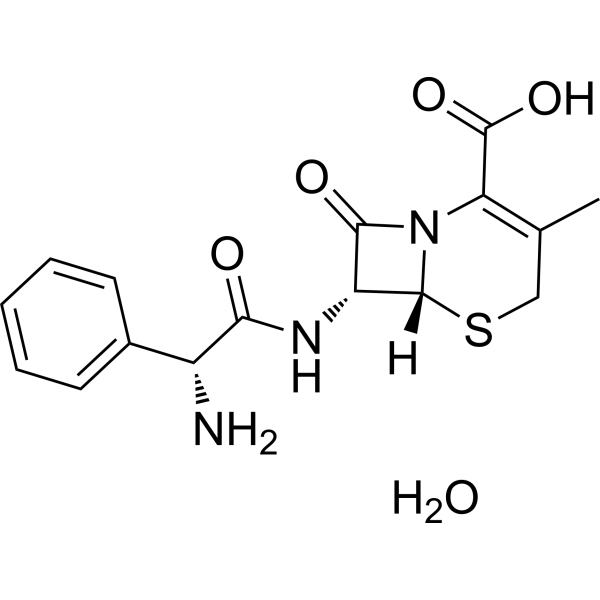
-
- HY-B0200D
-
|
Cefalexin (lysine); Cephacillin (lysine)
|
Penicillin-binding protein (PBP)
Bacterial
Antibiotic
|
Infection
Cancer
|
|
Cephalexin (Cefalexin) lysine is a potent, orally active new semisynthetic cephalosporin antibiotic with a broad antibacterial spectrum. Cephalexin lysine has antibacterial activity against a wide variety of gram-positive and gram-negative bacteria. Cephalexin lysine targets penicillin-binding proteins (PBPs) to inhibit bacterial cell wall assembly. Cephalexin lysine is used for the research of pneumonia, strep throat, and bacterial endocarditis, et al .
|
-
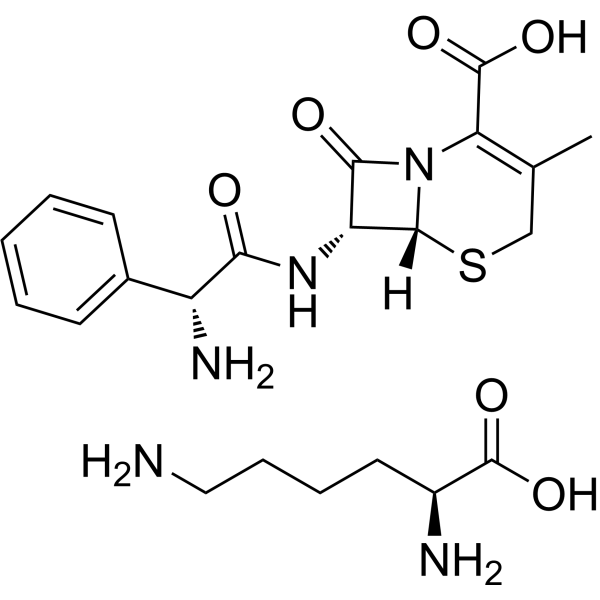
-
- HY-B0200C
-
|
Cefalexin hydrochloride monohydrate; Cephacillin hydrochloride monohydrate
|
Penicillin-binding protein (PBP)
Antibiotic
Bacterial
|
Infection
Cancer
|
|
Cephalexin (Cefalexin) hydrochloride monohydrate is a potent, orally active new semisynthetic cephalosporin antibiotic with a broad antibacterial spectrum. Cephalexin (Cefalexin) hydrochloride monohydrate has antibacterial activity against a wide variety of gram-positive and gram-negative bacteria. Cephalexin (Cefalexin) hydrochloride monohydrate targets penicillin-binding proteins (PBPs) to inhibit bacterial cell wall assembly. Cephalexin (Cefalexin) hydrochloride monohydrate is used for the research of pneumonia, strep throat, and bacterial endocarditis, et al .
|
-
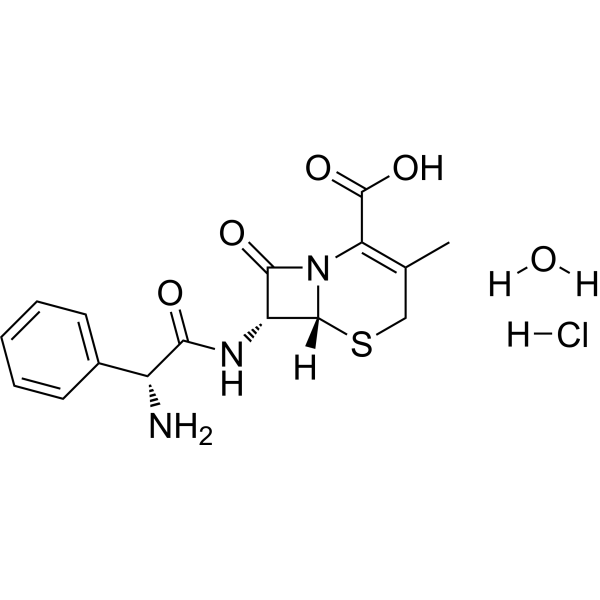
-
- HY-110347
-
|
|
Mps1
|
Cancer
|
|
Mps1-IN-1 dihydrochloride is a potent and ATP-competitive Mps1 kinase inhibitor with an IC50 of 367 nM. Mps1-IN-1 dihydrochloride inhibit Mps1 mitotic kinase activity and abrogates spindle assembly checkpoint (SAC) function. Mps1-IN-1 dihydrochloride decreases the viability of both cancer and ‘normal’ cells .
|
-
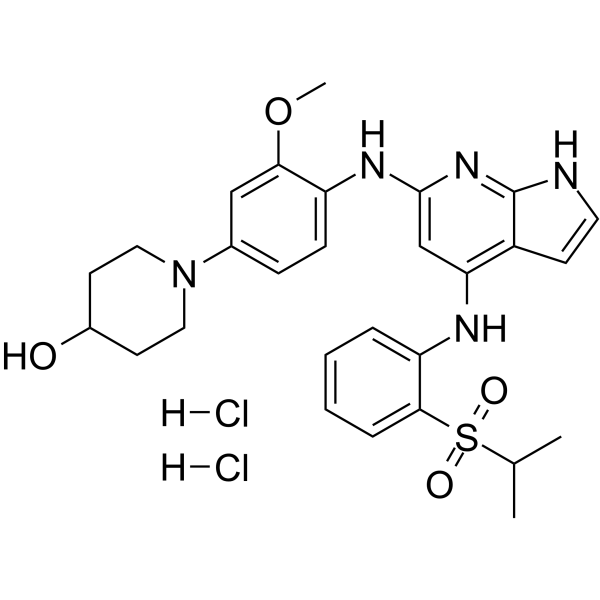
-
- HY-119648
-
|
|
Bacterial
|
Infection
|
CCR-11 is an antibacterial agent. CCR-11 can inhibit the proliferation of B. subtilis cells with an IC50 value of 1.2 μM. CCR-11 inhibits HeLa cell proliferation with an IC50 value of 18.1 μM. CCR-11 inhibits bacterial cytokinesis by inhibiting FtsZ assembly. CCR-11 can be used for the research of FtsZ-targeted antibacterial agents .
|
-
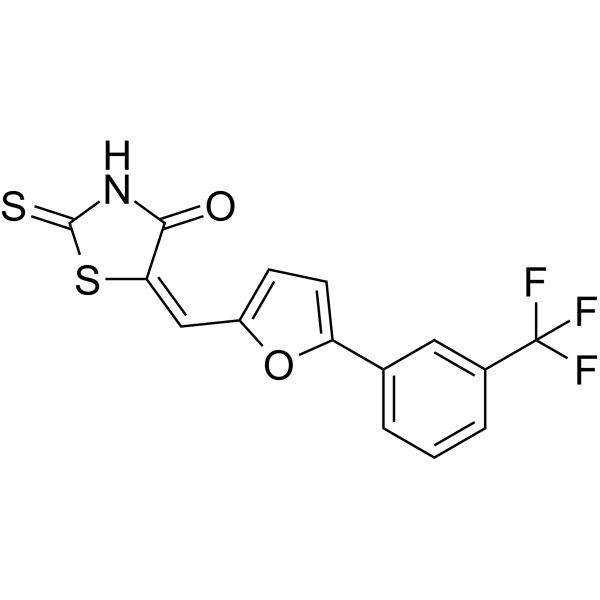
-
- HY-101989
-
|
|
Microtubule/Tubulin
Apoptosis
|
Cancer
|
|
Tubulin polymerization-IN-24 (compound HMBA) is a potent tubulin polymerization inhibitor. Tubulin polymerization-IN-24 inhibits MCF-7 cells proliferation. Tubulin polymerization-IN-24 induces apoptosis and cell cycle arrest at G2/M phase. Tubulin polymerization-IN-24 increase the GTP hydrolysis rate and inhibits microtubule assembly .
|
-
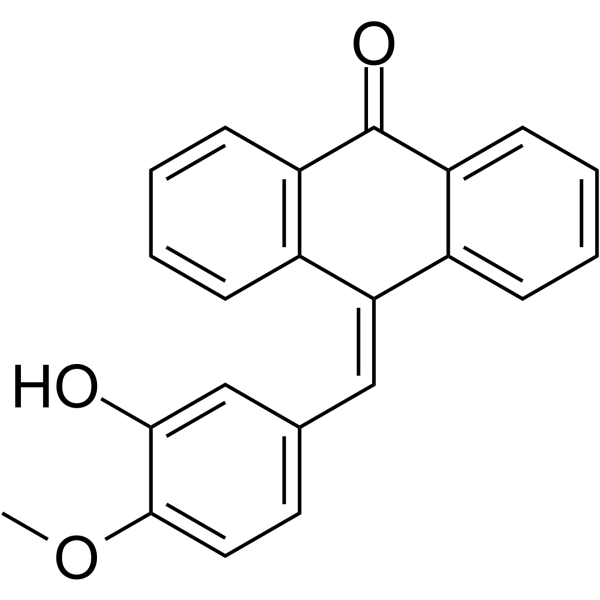
-
- HY-122882
-
|
|
E1/E2/E3 Enzyme
|
Inflammation/Immunology
|
|
HOIPIN-8 is a potent inhibitor of linear ubiquitin chain assembly complex (LUBAC) with an IC50 of 11 nM. HOIPIN-8 is a HOIPIN-1 derivative with enhanced the potency by 255-fold in the petit-LUBAC inhibition, and 10-fold and 4-fold in the LUBAC- and TNF-α-mediated NF-κB activation, respectively than HOIPIN-1. HOIPIN-1 is a promising tool to explore the cellular functions of LUBAC .
|
-
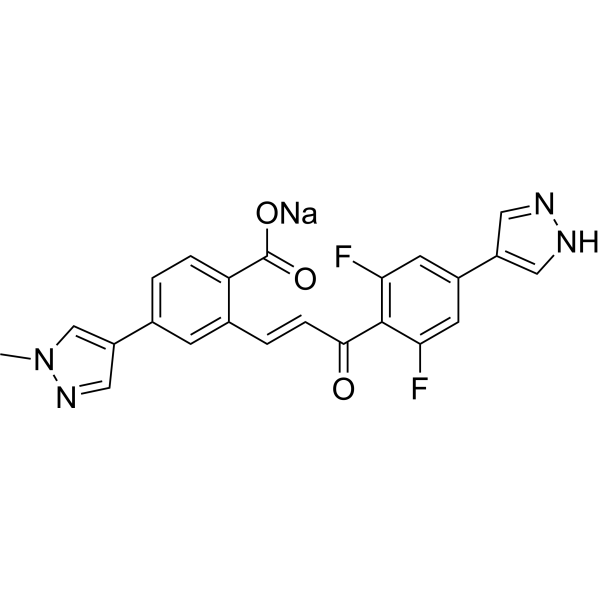
-
- HY-133821
-
|
|
G-quadruplex
|
Neurological Disease
|
|
N-Methylmesoporphyrin IX (NMM), a widely used G-quadruplex DNA specific fluorescent binder, is an efficient probe for monitoring Aβ fibrillation. N-Methylmesoporphyrin IX is an in situ inhibitor and an ex situ monitor for Aβ amyloidogenesis both in vitro and in cells. N-Methylmesoporphyrin IX is sensitive to G-quadruplexes DNA but has no response to duplexes, triplexes and single-stranded forms DNA. N-Methylmesoporphyrin IX is nonfluorescent alone or in monomeric Aβ environments, but emits strong fluorescence through stacking with the Aβ assemblies .
|
-
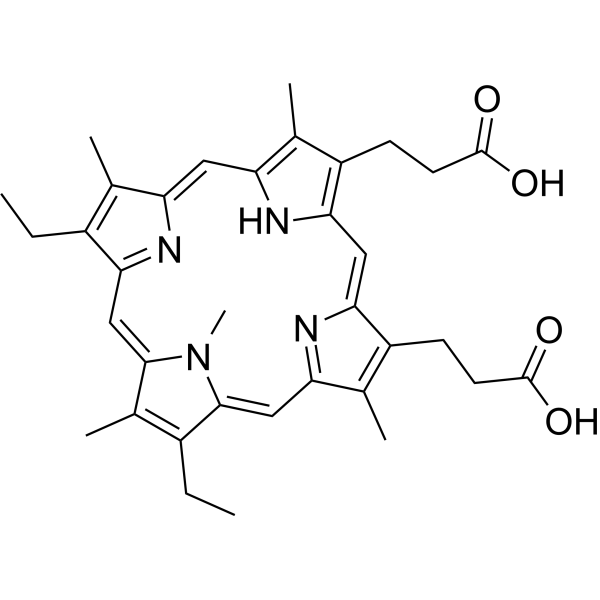
-
- HY-15552
-
|
Podophyllotoxin
|
Microtubule/Tubulin
|
Cancer
|
|
Podofilox (Podophyllotoxin) is a potent inhibitor of microtubule assembly and DNA topoisomerase II.
|
-
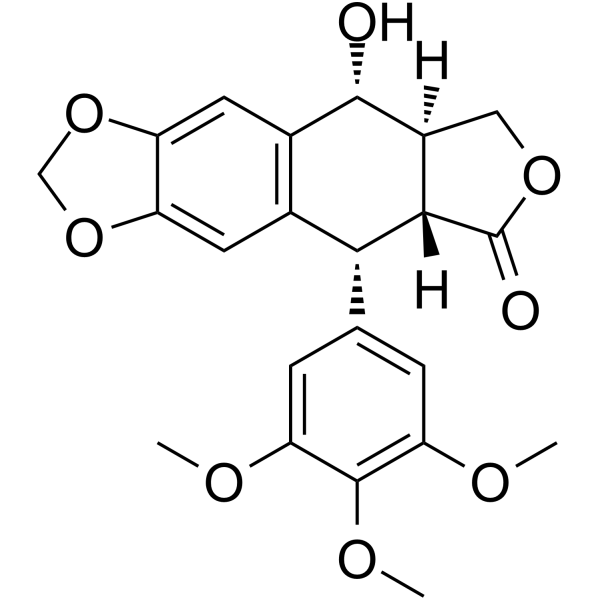
-
- HY-109168
-
|
JNJ-6379; JNJ-56136379
|
HBV
|
Infection
|
|
Bersacapavir is a novel Hepatitis B Virus capsid assembly modulator .
|
-
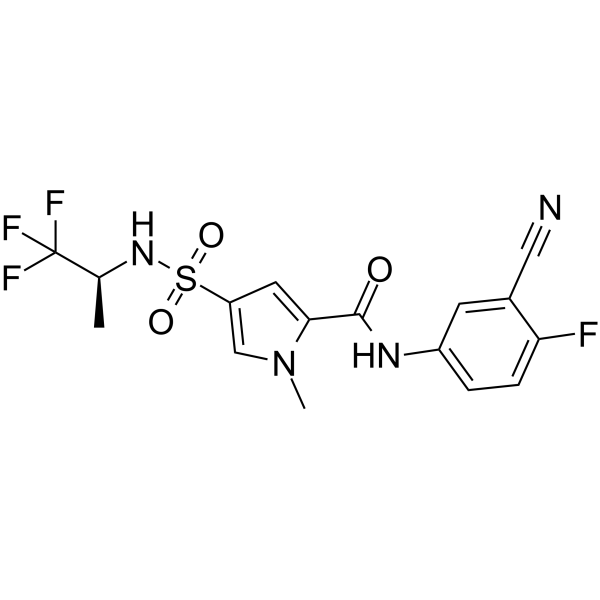
-
- HY-119692
-
-

-
- HY-17435
-
|
4'-O-demethylepipodophyllotoxin; 4'-DMEP
|
Microtubule/Tubulin
|
Cancer
|
|
4'-Demethylepipodophyllotoxin (4'-DMEP) is an intermediate compound that inhibits microtubule assembly.
|
-

-
- HY-112564
-
JNJ-632
2 Publications Verification
|
HBV
|
Infection
|
|
JNJ-632 is a hepatitis B virus (HBV) capsid assembly modulator (CAM).
|
-
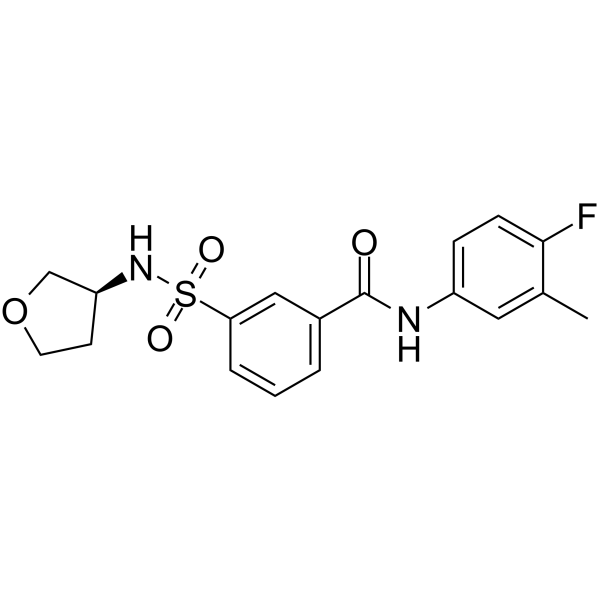
-
- HY-13760
-
|
ILX651
|
Microtubule/Tubulin
|
Cancer
|
|
Tasidotin hydrochloride is a peptide analog of the antimitotic depsipeptide dolastatin 15, as an inhibitor of microtubule assembly and microtubule dynamics.
|
-
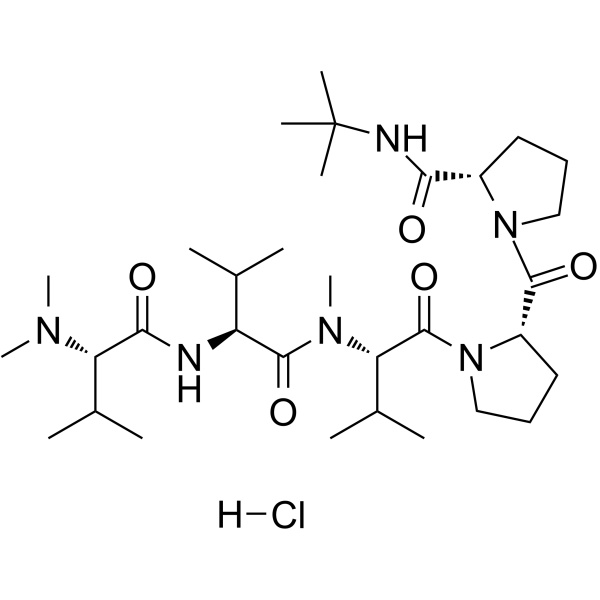
-
- HY-P5381
-
|
|
NADPH Oxidase
|
Others
|
|
gp91 ds-tat is a biological active peptide. (NADPH oxidase assembly peptide inhibitor)
|
-
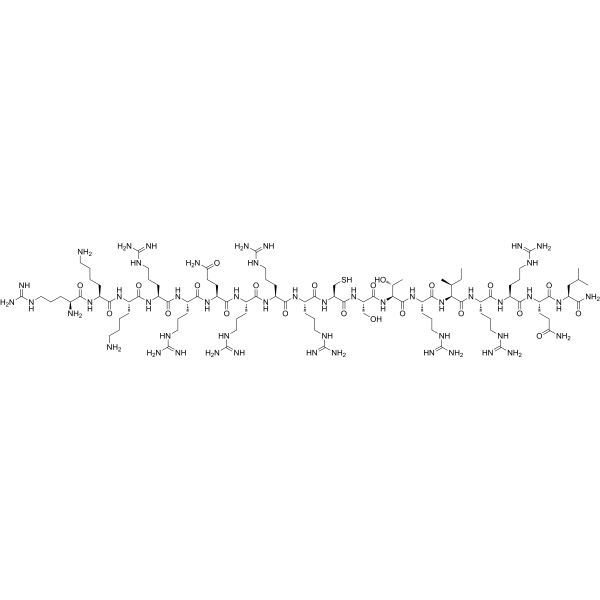
-
- HY-115364
-
|
SKF 29044
|
Microtubule/Tubulin
Parasite
|
Infection
|
|
Parbendazole is a potent inhibitor of microtubule assembly, destabilizes tubulin, with an EC50 of 530 nM, and exhibits a broad-spectrum anthelmintic activity.
|
-
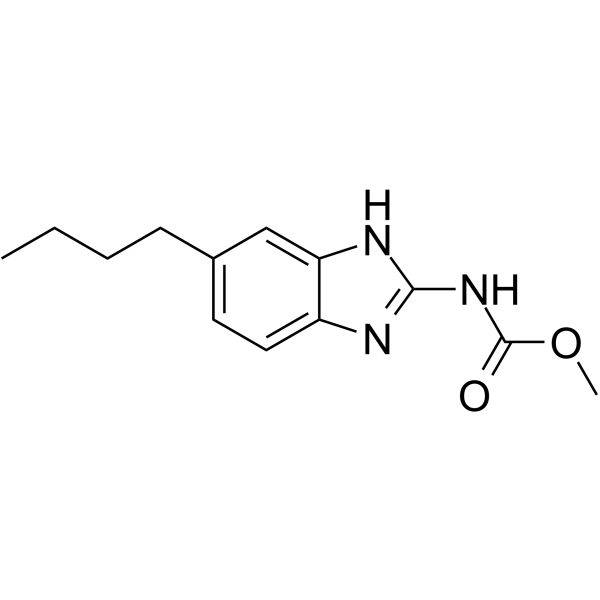
-
- HY-N0687
-
|
|
Microtubule/Tubulin
|
Cancer
|
|
Vindoline, a vinca alkaloid extracted from the leaves of Catharanthus roseus, weakly inhibits tubulin self-assembly .
|
-

-
- HY-132884
-
|
|
Others
|
Cancer
|
|
TTK inhibitor 3 is a potent and selective TTK (an essential spindle assembly checkpoint enzyme) inhibitor with an IC50 value of 3.0 nM.
|
-
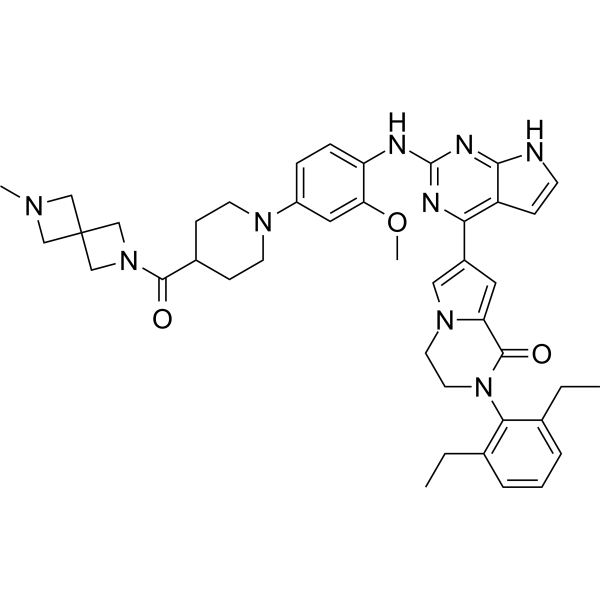
-
- HY-P3244
-
|
|
Amyloid-β
|
Neurological Disease
|
|
D-KLVFFA is the inhibitor of Amyloid-β assembly, with the IC50 of 2.6 μM, that can be used in Alzheimer's disease study .
|
-
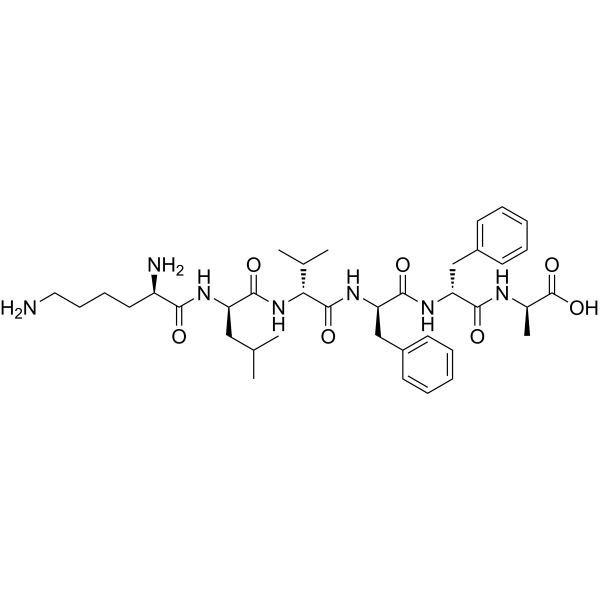
-
- HY-W008848A
-
|
|
Others
|
Metabolic Disease
|
|
DMT-L-dG(ib) Phosphoramidite (Compound 20D) is a nucleoside phosphoramidite that can be used for nucleotide assembly on solid supports .
|
-
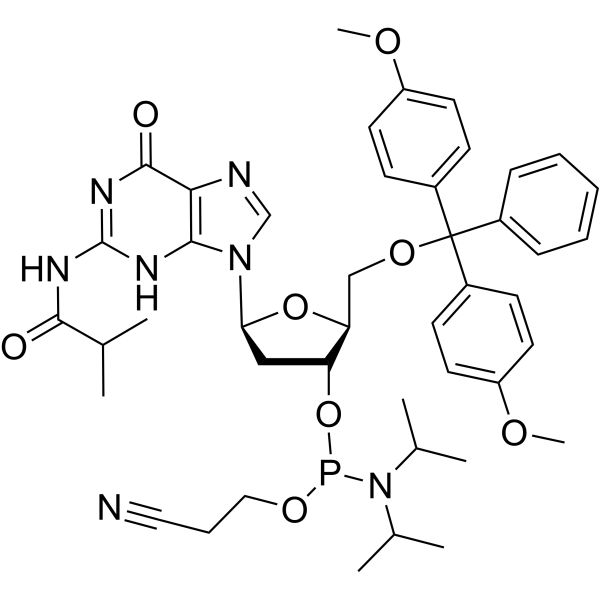
-
- HY-161148
-
|
|
Bacterial
|
Infection
|
|
FtsZ-IN-9 (compound 11) is an antimicrobial agent. FtsZ-IN-9 inhibits the assembly of Mycobacterium smegmatis FtsZ (MsFtsZ)[1].
|
-
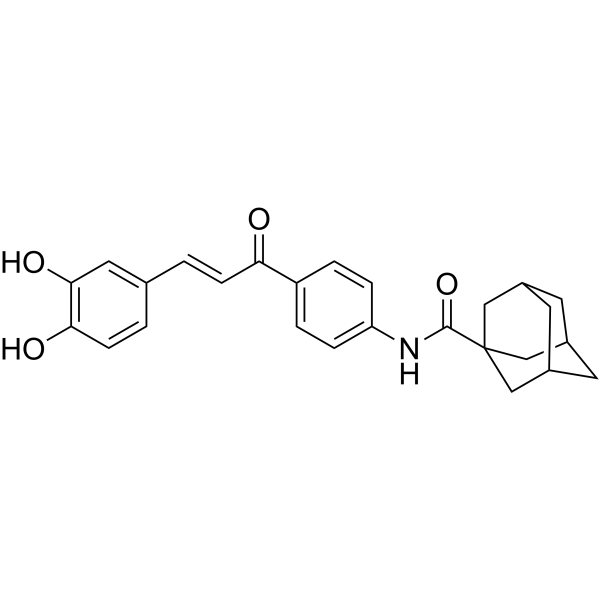
-
- HY-15552S
-
|
|
Microtubule/Tubulin
|
Cancer
|
|
Podofilox-d6 is the deuterium labeled Podofilox. Podofilox (Podophyllotoxin) is a potent inhibitor of microtubule assembly and DNA topoisomerase II[1][2].
|
-
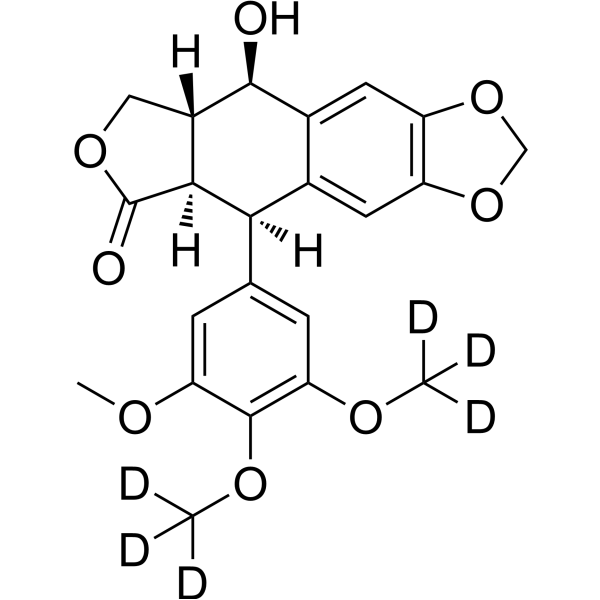
-
- HY-151879
-
-
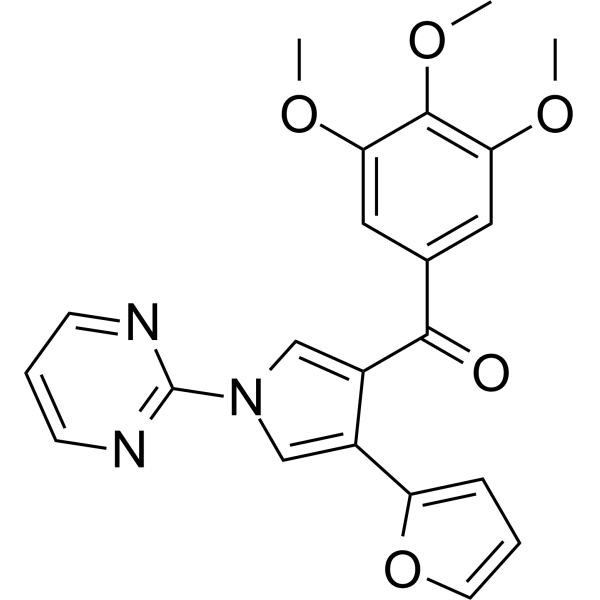
-
- HY-P1449
-
|
|
ADC Linker
|
Cancer
|
|
Boc-Gly-Gly-Phe-Gly-OH, a self-assembly of N- and C-protected tetrapeptide, is a protease cleavable linker used for the antibody-drug conjugate (ADC).
|
-
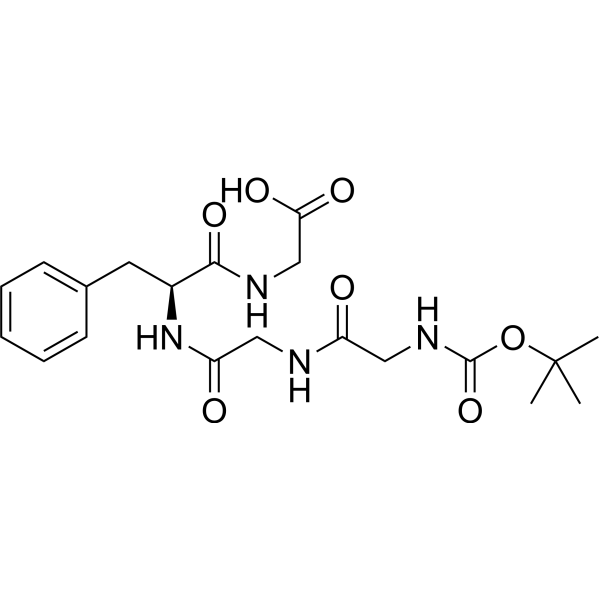
-
- HY-P1449A
-
|
|
ADC Linker
|
Cancer
|
|
Boc-Gly-Gly-Phe-Gly-OH TFA, a self-assembly of N- and C-protected tetrapeptide, is a protease cleavable linker used for the antibody-drug conjugate (ADC).
|
-

-
- HY-115364S
-
-
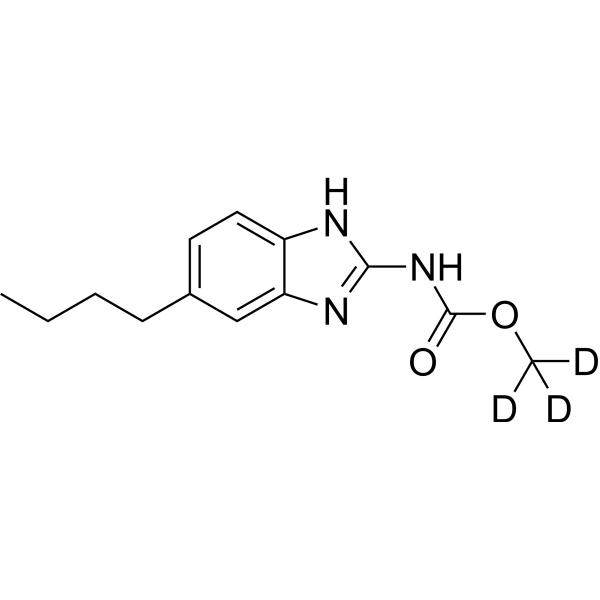
- HY-P4808
-
|
|
Amyloid-β
|
Neurological Disease
|
|
PHF6 (VQIVYK) is a self-assembly sequence capable of initiating the full-length tau protein aggregation and is mapped to the third microtubule-binding repeat region of the tau protein .
|
-

- HY-112540B
-
|
|
Endogenous Metabolite
|
Metabolic Disease
|
|
Acetoacetic acid sodium is a metabolite of non-esterified fatty acids, involved in the development of human diabetes. Acetoacetic acid sodium induces oxidative stress to inhibit the assembly of very low density lipoprotein in bovine hepatocytes .
|
-

- HY-145872
-
|
|
HBV
|
Infection
|
|
HBV-IN-20 is a potent and oral active HBV inhibitor with an EC50 of 0.46 µM. HBV-IN-20 is a typical type II CpAM (core protein assembly modulators) .
|
-
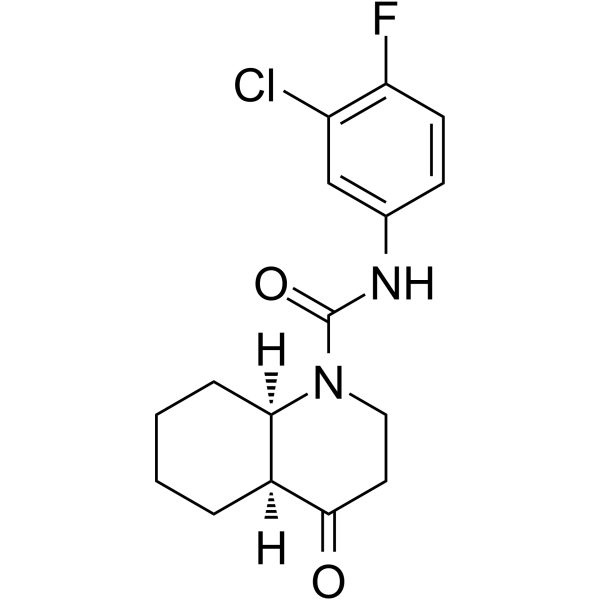
- HY-145911
-
-
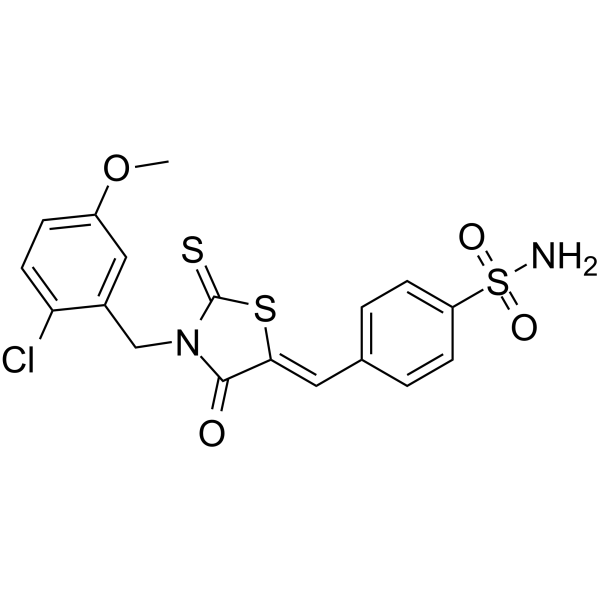
- HY-115364R
-
|
SKF 29044 (Standard)
|
Microtubule/Tubulin
Parasite
|
Infection
|
|
Parbendazole (Standard) is the analytical standard of Parbendazole. This product is intended for research and analytical applications. Parbendazole is a potent inhibitor of microtubule assembly, destabilizes tubulin, with an EC50 of 530 nM, and exhibits a broad-spectrum anthelmintic activity.
|
-

- HY-B0949A
-
|
|
|
|
|
Protriptyline is a potent antidepressant agent. Protriptyline inhibits AChE activity with IC50 value of 0.06 mM and inhibits Aβ Self-Assembly. Protriptyline can be used for depression and Alzheimers disease .
|
-
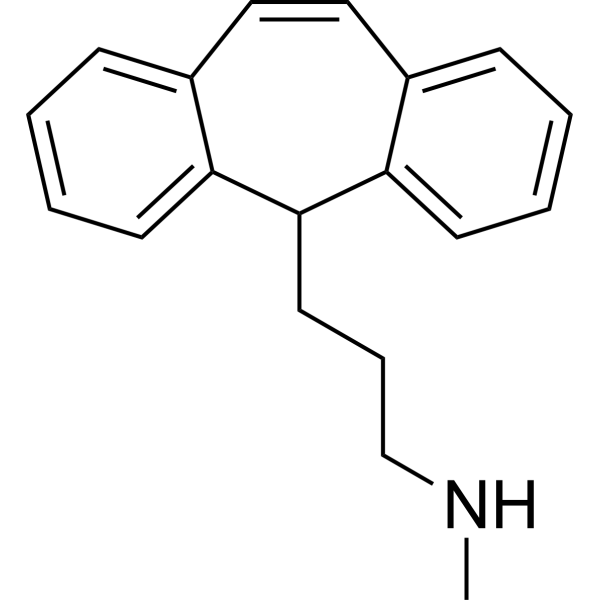
- HY-113761
-
|
|
Filovirus
|
Infection
|
|
ASN03576800 could be a potent inhibitor for Ebola virus matrix protein VP40 in process of viral assembly and budding process. ASN03576800 occupies the RNA binding region of VP40 .
|
-
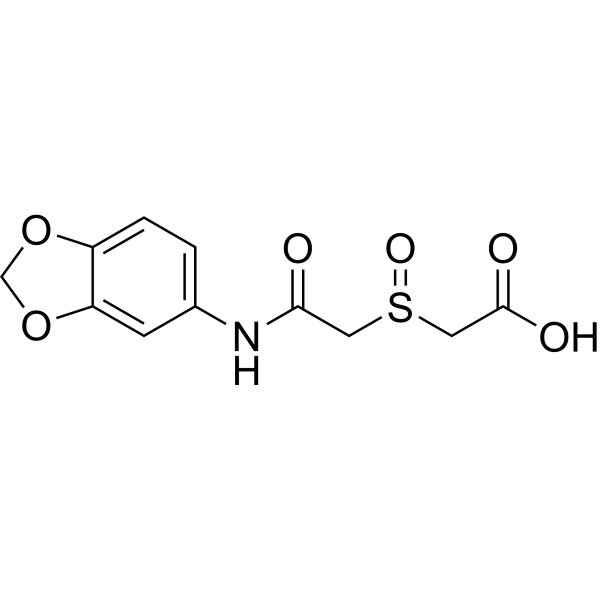
- HY-163201
-
|
|
TMV
|
Infection
|
|
TMV-IN-7 (compound G2) is a potent inhibitor of tobacco mosaic virus (TMV). TMV-IN-7 exhibits strong hydrophobic interactions to obstructing the virus’s self-assembly .
|
-
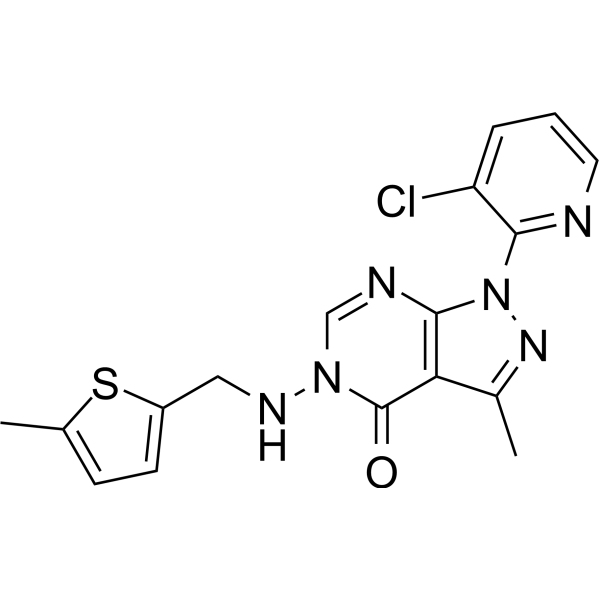
- HY-P2203A
-
|
|
Notch
|
|
|
SAHM1 TFA is a Notch pathway inhibitor. SAHM1 TFA stabilizes hydrocarbon-stapled alpha helical peptide. SAHM1 TFA targets the protein-protein interface and prevents Notch complex assembly.
|
-
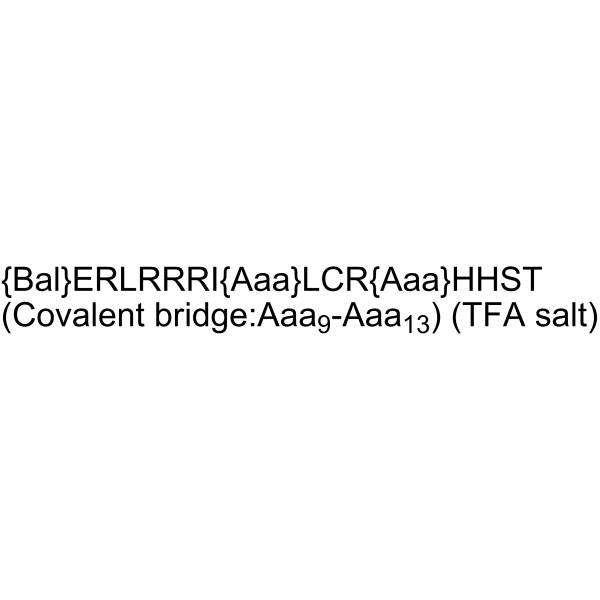
- HY-163270
-
|
|
Microtubule/Tubulin
|
Cancer
|
|
PM534, tubulin targeting agent, inhibits tubulin assembly with IC50 values of 0.8-3.2 nM. PM534 binds to the colchicine site of tubulin, which has high antitumor activity .
|
-
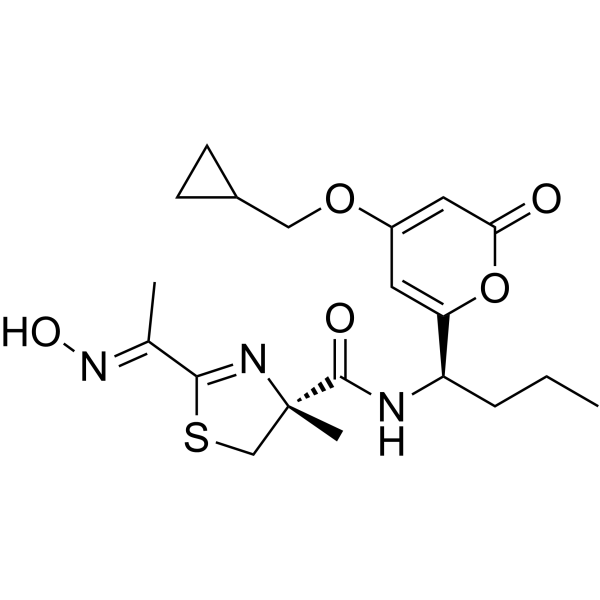
- HY-100341
-
|
|
Others
|
Others
|
|
M2I-1 is a Mad2 inhibitor targeting the binding of Mad2 to Cdc20, an essential protein-protein interaction (PPI) within the spindle assembly checkpoint (SAC) .
|
-
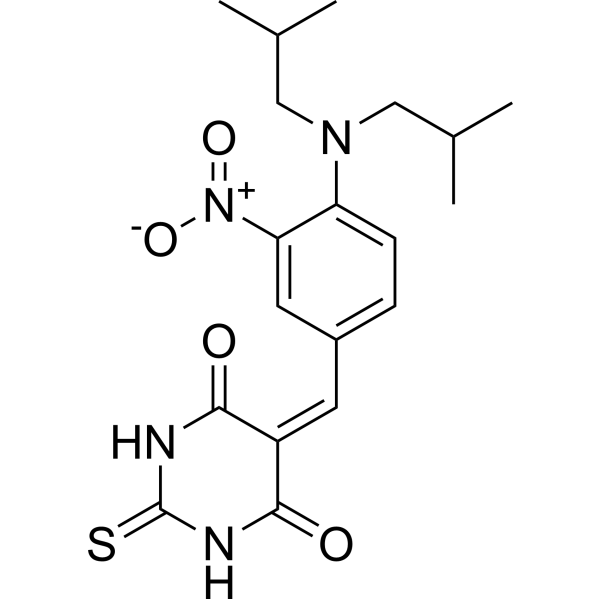
- HY-128908
-
|
|
Drug-Linker Conjugates for ADC
|
Cancer
|
|
MC-Val-Cit-PAB-Indibulin is a agent-linker conjugate for ADC with potent antitumor activity by using Indibulin (an orally applicable inhibitor of tubulin assembly), linked via the ADC linker MC-Val-Cit-PAB.
|
-

- HY-P3926
-
|
hIAPP (8-37)
|
Amylin Receptor
|
Metabolic Disease
|
|
Amylin (8-37) (human) (hIAPP (8-37)) is a 8-37 fragment of human islet amyloid polypeptide (IAPP). The duplex folding structure in the Amylin (8-37) (human) assembly has a hairpin structure .
|
-

- HY-112142
-
AB-423
3 Publications Verification
|
HBV
|
Infection
|
|
AB-423 is an inhibitor of HBV capsid assembly, and potent inhibits HBV replication with EC50/EC90 of 0.08-0.27 μM/0.33-1.32 μM in cells.
|
-

- HY-122881
-
|
JTP-0819958
|
IKK
|
Cancer
|
|
HOIPIN-1 (JTP-0819958) is a selective linear ubiquitin chain assembly complex (LUBAC) inhibitor with an IC50 of 2.8 μM . HOIPIN-1 suppress LUBAC-mediated NF-kB activation in vitro .
|
-
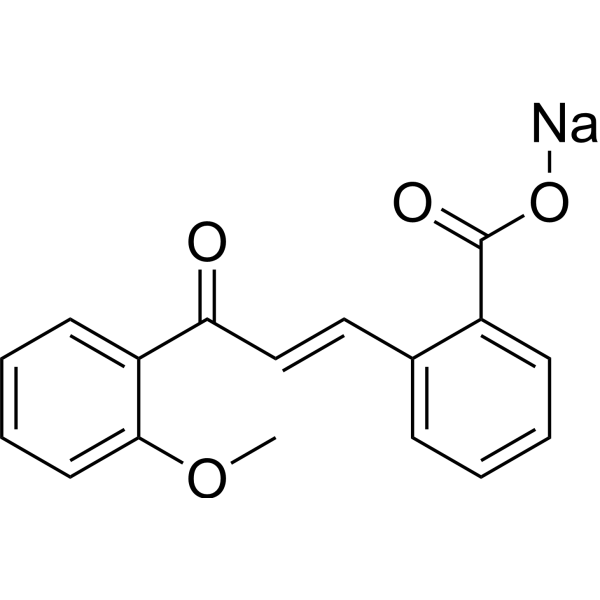
- HY-155044
-
|
|
TMV
Fungal
|
Infection
|
|
TMV-IN-5 (compound 1a) is an anti-plant virus/fungal agent. TMV-IN-5 inhibits viral assembly by binding to tobacco mosaic virus (TMV) CP. TMV-IN-5 can be used in the development of pesticides .
|
-
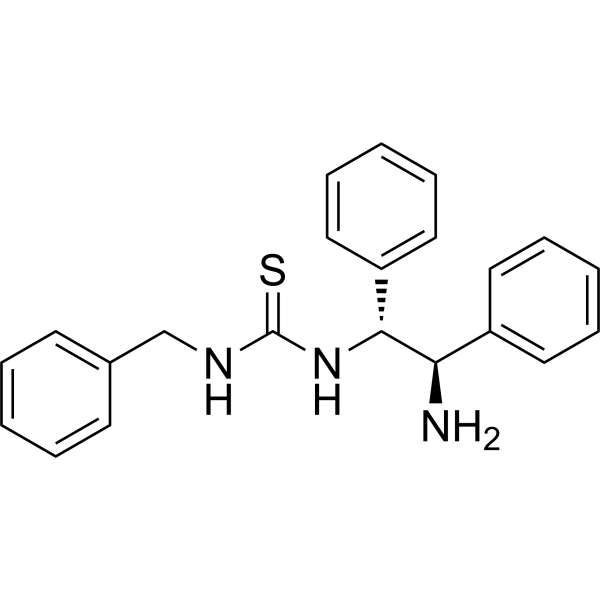
- HY-13520
-
Nocodazole
Maximum Cited Publications
53 Publications Verification
Oncodazole; R17934
|
Microtubule/Tubulin
Bcr-Abl
CRISPR/Cas9
Autophagy
Apoptosis
|
Cancer
|
|
Nocodazole (Oncodazole) is a rapidly-reversible inhibitor of microtubule. Nocodazole binds to β-tubulin and disrupts microtubule assembly/disassembly dynamics, which prevents mitosis and induces apoptosis in tumor cells. Nocodazole inhibits Bcr-Abl, and activates CRISPR/Cas9.
|
-
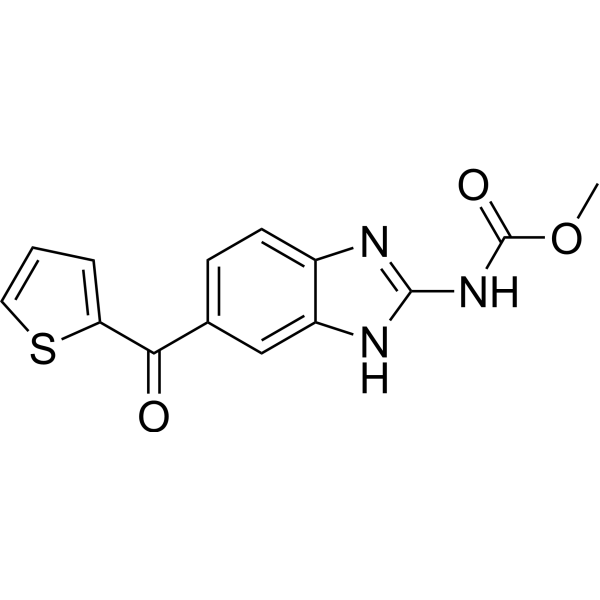
- HY-144793
-
|
|
Others
|
Cancer
|
|
Deac-SS-Biotin is a potent antitumor agent. Deac-SS-Biotin uptakes into the cells through biotin-mediated internalization. Deac-SS-Biotin combined with DTT (Glutathione mimetic) can effectively inhibit microtubule assembly and displays greater antitumor activity .
|
-
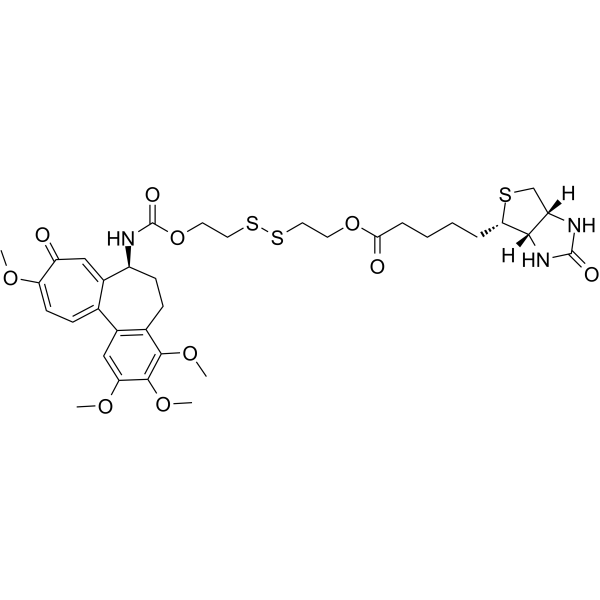
- HY-154971
-
|
|
Apoptosis
|
Cancer
|
|
Ara-SH is a Cytarabine mercaptopropionic acid-substituted derivative. Ara-SH is used as the trigger to fabricate a smart Cytarabine and Venetoclax-coloaded nanoparticle (AV-NP) through self-assembly. Ara-SH exhibits remarkable synergistic antileukemia effects in vitro and in vivo .
|
-
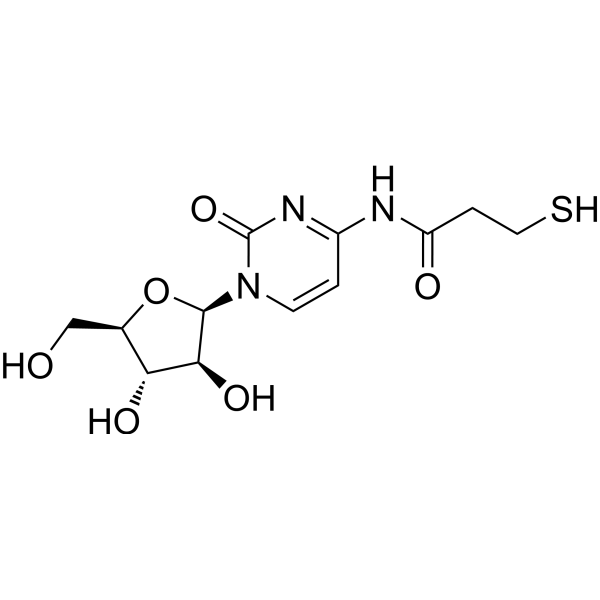
- HY-N9921
-
|
|
Pyroptosis
NOD-like Receptor (NLR)
|
Inflammation/Immunology
|
|
Antcin A is a potent NLRP3 inhibitor that inhibits the assembly and activation of the NLRP3 inflammasome. Antcin A can inhibit Kupffer cell pyroptosis and has liver protective activity. Antcin A can be used to study inflammation, such as non-alcoholic fatty liver disease .
|
-
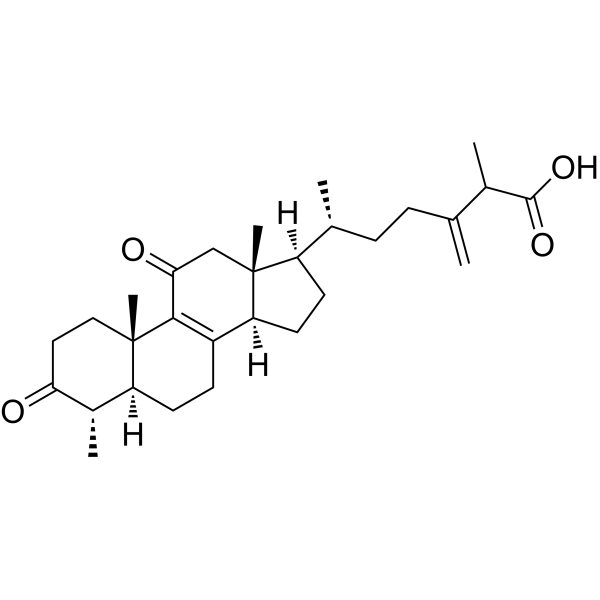
- HY-103666
-
|
|
NOD-like Receptor (NLR)
|
Inflammation/Immunology
|
|
CY-09 is a selective and direct NLRP3 inhibitor. CY-09 directly binds to the ATP-binding motif of NLRP3 NACHT domain and inhibits NLRP3 ATPase activity, resulting in the suppression of NLRP3 inflammasome assembly and activation .
|
-

- HY-100817
-
|
|
|
|
|
Rbin-2 is a potent, reversible and selective inhibitor of Midasin (Mdn1), an enzyme belonging to the AAA+ (ATPases associated with diverse cellular activities) protein family. Rbin-2 inhibits eukaryotic ribosome biogenesis and is a powerful probe for the eukaryotic ribosome assembly .
|
-
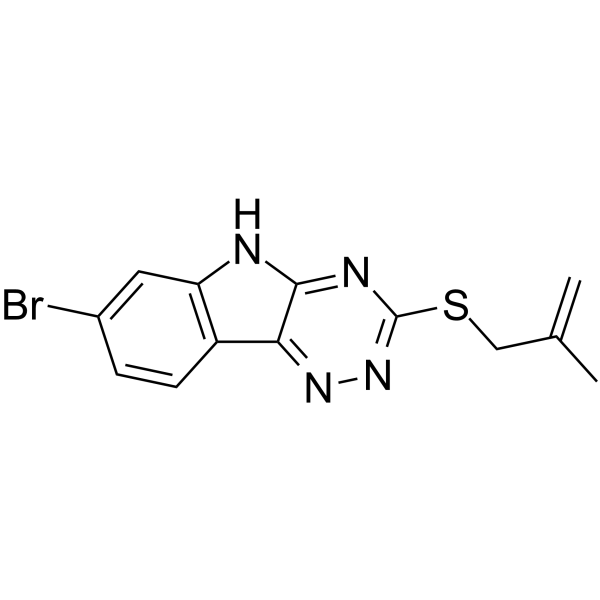
- HY-N6773
-
|
|
HIV Protease
Fungal
|
Infection
|
|
Cytochalasin A is a cell-permeable fungal toxin that is an oxidized derivative of cytochalasin B. Cytochalasin A is an inhibitor of HIV-1 protease (IC50=3 μM) and inhibits actin polymerization and interferes with microtubule assembly by reacting with sulfhydryl groups. Antibiotic and fungicidal activitives .
|
-
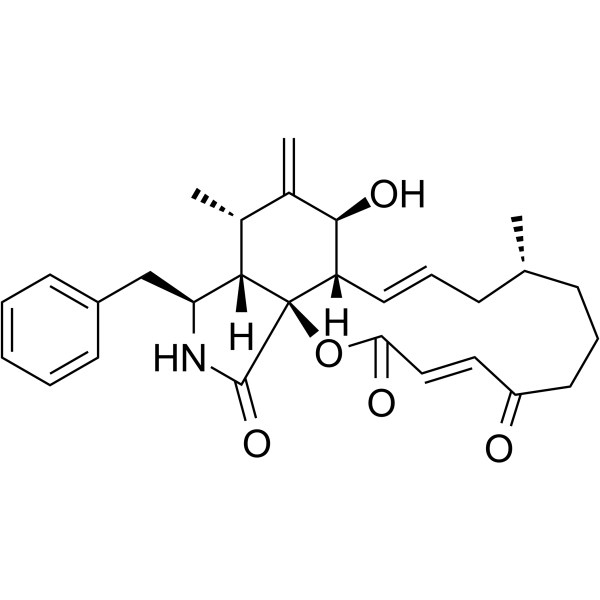
- HY-B1464
-
|
|
|
|
|
Cetylpyridinium chloride, a cationic quaternary ammonium compound, is an anti-bacterial agent with broad-spectrum activity. Cetylpyridinium chloride is an effective anti-HBV capsid assembly inhibitor with an IC50 of 2.5 μM. Cetylpyridinium chloride is used in pesticides and various types of mouthwashes, and other personal care products .
|
-

- HY-100236
-
|
DDD00107587
|
Others
|
Cancer
|
|
Madrasin (DDD00107587) is a splicing inhibitor that prevents formation of both splicing intermediates and products in vitro and interferes with one or more early steps in the pathway of spliceosome assembly. Madrasin also can inhibit pre-mRNA splicing in vitro and modify splicing of endogenous pre-mRNA in cells .
|
-

- HY-13649
-
|
ZIO 301; D 24851
|
Microtubule/Tubulin
Apoptosis
|
Neurological Disease
Cancer
|
|
Indibulin (ZIO 301), an orally applicable inhibitor of tubulin assembly, shows potent anticancer activity with a minimal neurotoxicity. Indibulin reduces inter-kinetochoric tension, produces aberrant spindles, activates mitotic checkpoint proteins Mad2 and BubR1, and induces mitotic arrest and apoptosis .
|
-
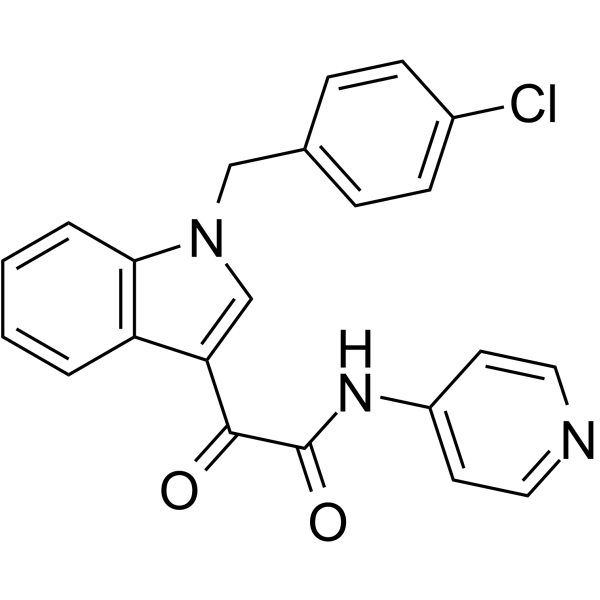
- HY-N2360
-
|
|
E1/E2/E3 Enzyme
Apoptosis
|
Cancer
|
|
Hinokiflavone is a novel modulator of pre-mRNA splicing activity in vitro and in cellulo. Hinokiflavone blocks splicing of pre-mRNA substrates by inhibiting spliceosome assembly, specifically preventing B complex formation. Hinokiflavone is a SUMO protease inhibitor, inhibiting sentrin-specific protease 1 (SENP1) activity .
|
-
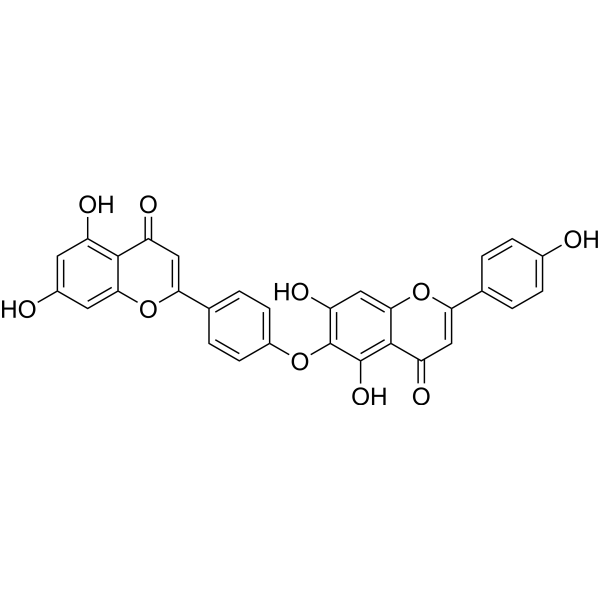
- HY-153384
-
|
|
Microtubule/Tubulin
Apoptosis
|
Cancer
|
|
EAPB 02303 is a microtubule-disrupting agent and inhibitor. EAPB 02303 induces mitosis arrest and impairment of spindle assembly. Thus, EAPB 02303 induces apoptosis and exhibits antitumor activity. EAPB 02303 also exhibits a potent synergy with Paclitaxel (HY-B0015) at lower concentrations .
|
-
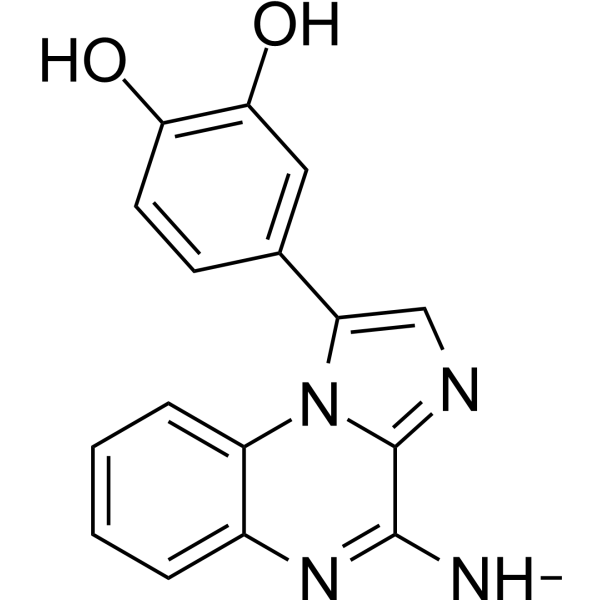
- HY-149604
-
|
|
NOD-like Receptor (NLR)
|
Inflammation/Immunology
|
|
NLRP3-IN-21 (compound L38) is a NLRP3 inflammasome inhibitor with inflammatory properties. NLRP3-IN-21 inhibits NLRP3 inflammasome activation and pyroptosis by suppressing gasdermin D cleavage, ASC oligomerization, and NLRP3 inflammasome assembly .
|
-
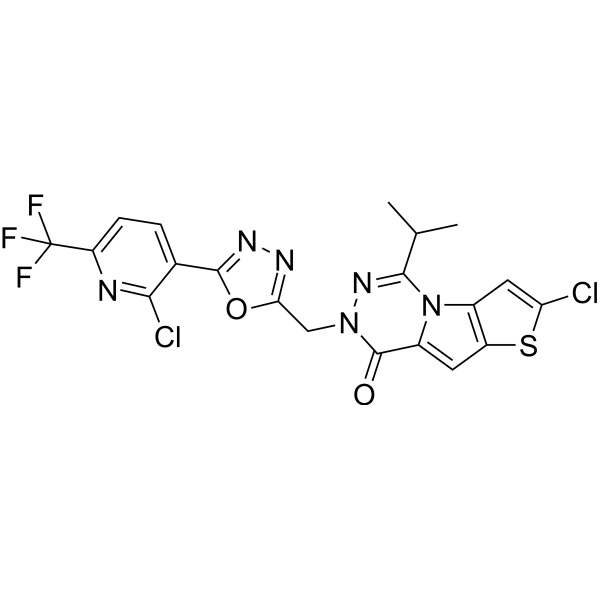
- HY-162150
-
|
AZL-N
|
Pyroptosis
|
Inflammation/Immunology
|
|
Azalamellarin N is an inhibitor of pyroptosis and has different inhibitory effects on different pyroptosis inducers. Azalamellarin N inhibits pyroptosis by targeting molecules that act upstream of NLRP3 inflammasome activation, rather than directly targeting components of the NLRP3 inflammasome. Inhibitory potency against different pyroptosis inducers: Nigericin (HY-127019) > R837 (HY-B0180) .
|
-
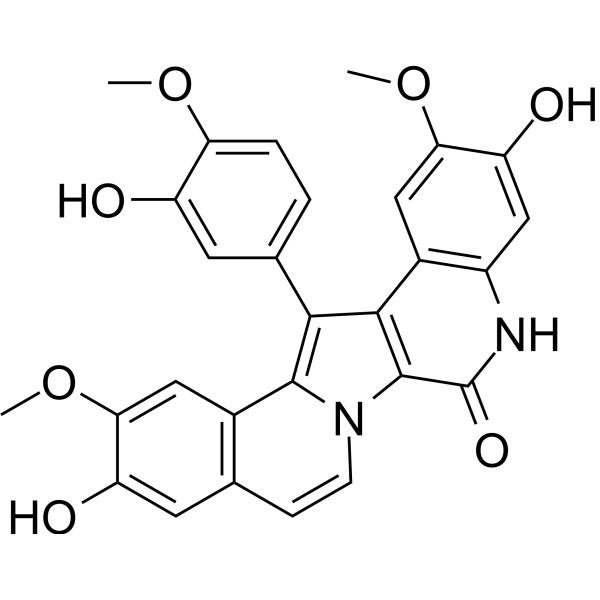
- HY-W751932
-
|
|
Biochemical Assay Reagents
|
Others
|
|
Carboxy-EG6-undecanethiol is an alkanethiol that suitable for self-assembly a gold thin-film substrate. Carboxy-EG6-undecanethiol can selectively capture HbA1c in sample by covalent coupling of 3-aminophenyl boronic acid (3-APBA) .
|
-
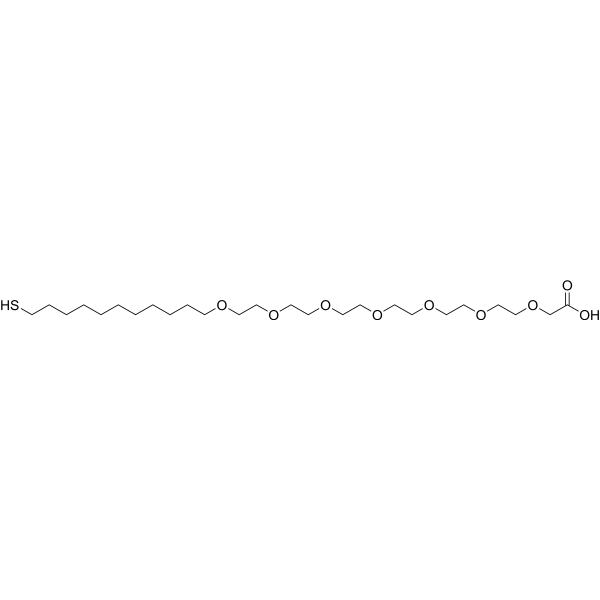
- HY-148768
-
|
|
HBV
|
Inflammation/Immunology
|
|
AB-506 is an orally active inhibitor of HBV replication targeting the viral core protein. AB-506 can bind to HBV core protein, accelerate capsid assembly and inhibit HBV pgRNA encapsidation. AB-506 can be used in chronic hepatitis B (CHB) research .
|
-

- HY-156034
-
|
NLRP3-IN-19
|
NOD-like Receptor (NLR)
|
Inflammation/Immunology
|
|
JT001 (NLRP3-IN-19) is a potent, specific and orally active inhibitor of NLRP3. JT001 can inhibit NLRP3 inflammasome assembly, resulting in the inhibition of cytokine release and the prevention of pyroptosis. JT001 can be used for the research of nonalcoholic steatohepatitis and liver fibrosis .
|
-
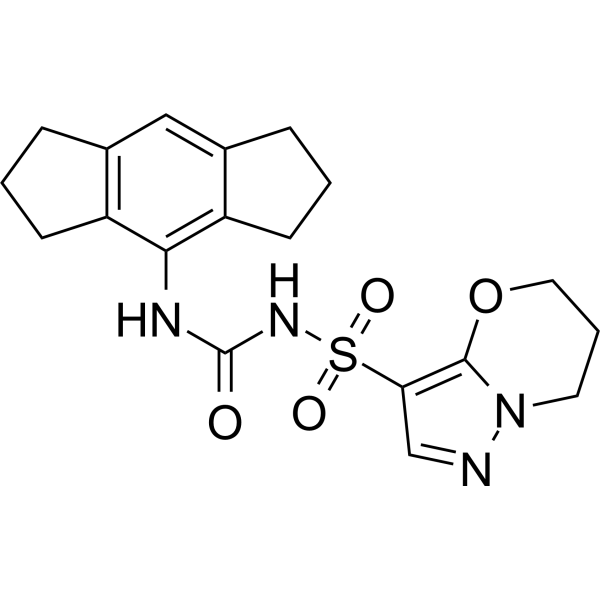
- HY-156034A
-
|
NLRP3-IN-19 sodium
|
NOD-like Receptor (NLR)
|
Inflammation/Immunology
|
|
JT001 (NLRP3-IN-19) sodium is a potent, specific and orally active inhibitor of NLRP3. JT001 sodium can inhibit NLRP3 inflammasome assembly, resulting in the inhibition of cytokine release and the prevention of pyroptosis. JT001 sodium can be used for the research of nonalcoholic steatohepatitis and liver fibrosis .
|
-
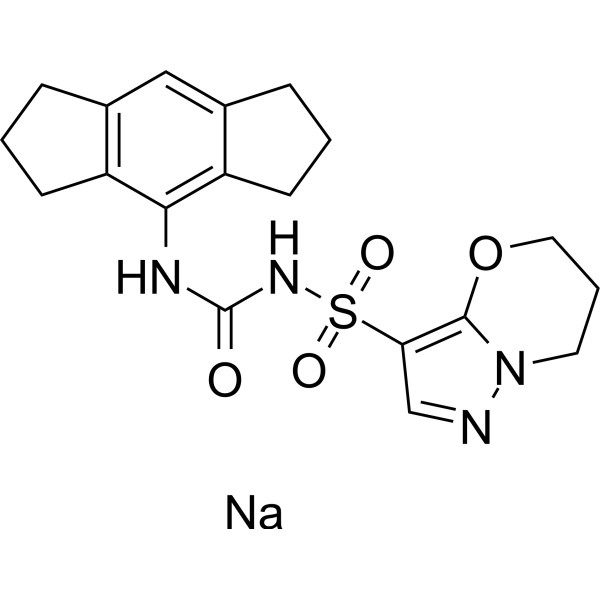
- HY-162143
-
|
|
SphK
Akt
mTOR
|
Cancer
|
|
SKI-349 is a dual-targeted inhibitor of sphingosine kinase 1/2 (SPHK1/2) and microtubule assembly (MDA). SKI-349 has anticancer activity. SKI-349 can inhibit the vitality, invasion, and AKT/mTOR signaling pathway of liver cells .
|
-
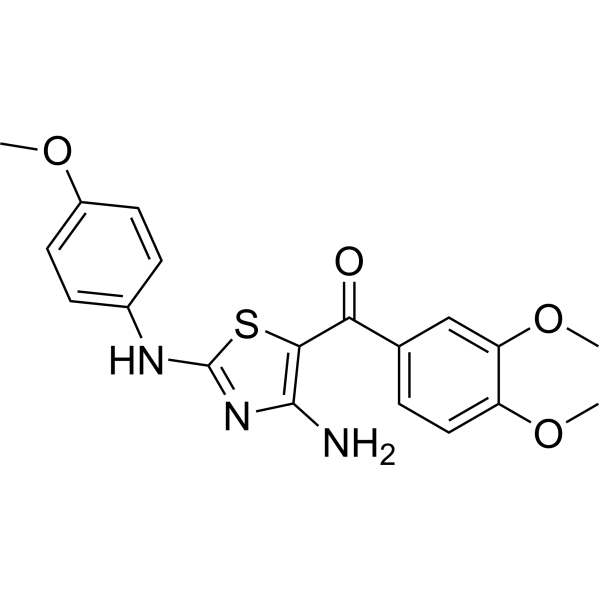
- HY-148870
-
|
|
ADC Cytotoxin
|
Cancer
|
|
Maytansinoid B is a kind of ADC Cytotoxin. Maytansinoid B can be used to conjugates with antibodies to form antibody-drug conjugates (ADCs). Maytansinoids are known as antimitotic agents, binding to tubulin and inhibiting microtubule assembly. Maytansinoids induces G2/M arrest in the cell cycle to induce apoptosis .
|
-

- HY-128773
-
|
|
Bacterial
|
Infection
|
|
MRL-494, an antibacterial agent, is a inhibitor of β-barrel assembly machine A (BamA) impervious to efflux and the outer membrane permeability barrier. MRL-494 can inhibits Gram-positive (MIC of 12.5 μM for Staphylococcus aureus COL) and Gram-negative (MIC of 25 μM for E. coli JCM158) bacterias .
|
-

- HY-128773A
-
|
|
Bacterial
|
Infection
|
|
MRL-494 hydrochloride, an antibacterial agent, is a inhibitor of β-barrel assembly machine A (BamA) impervious to efflux and the outer membrane permeability barrier. MRL-494 hydrochloride can inhibits Gram-positive (MIC of 12.5 μM for Staphylococcus aureus COL) and Gram-negative (MIC of 25 μM for E. coli JCM158) bacterias .
|
-

- HY-124955
-
proTAME
1 Publications Verification
|
APC
|
Cancer
|
|
proTAME, a cell-permeable proagent form of TAME, is an anaphase promoting complex/cyclosome (APC/C) inhibitor. proTAME causes cell cycle arrest in metaphase .
|
-
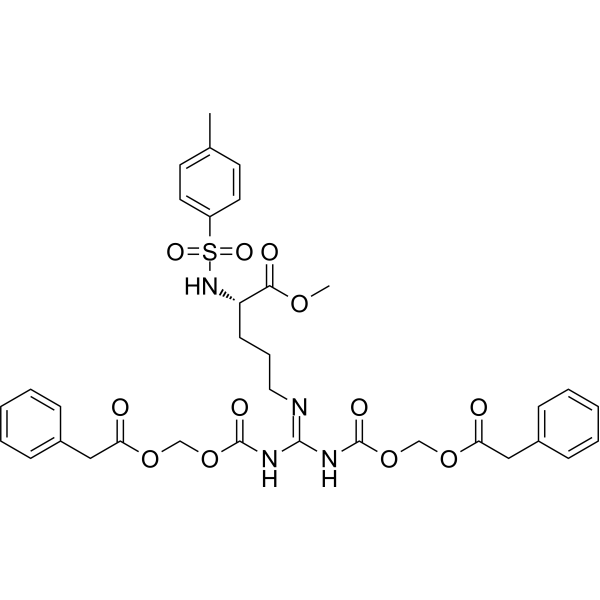
- HY-151344
-
|
|
HIF/HIF Prolyl-Hydroxylase
|
Cancer
|
|
HIF-1/2α-IN-2 is an inhibitor of HIF-1/2α. HIF-1/2α-IN-2 decrease HIF-1/2α levels and induces iron starvation response by targeting Iron Sulfur Cluster Assembly 2 (ISCA2) .
|
-
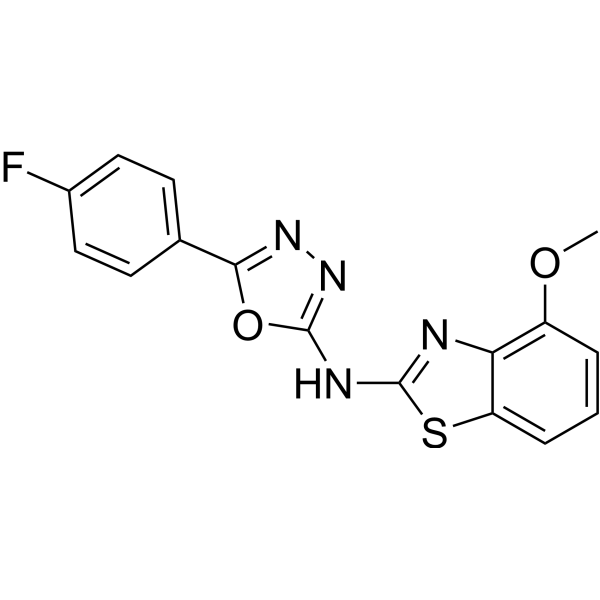
- HY-160065
-
|
|
Others
|
Cancer
|
|
sgc8c aptamer sodium is an aptamer that specifically targets the human protein tyrosine kinase PTK-7, which is mainly expressed on cervical cancer HeLa cells. Binding of sgc8c aptamer sodium to PTK-7 induces the assembly of nanotags on the cell surface, resulting in strong fluorescence and SERS signals. Specific to cervical cancer cells .
|
-
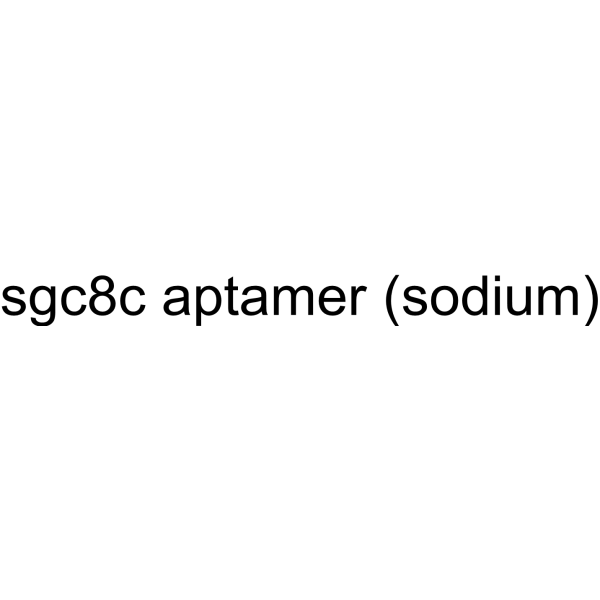
- HY-114314
-
|
|
HBV
|
Infection
|
|
BA-53038B is a HBV core protein allosteric modulator (CpAM), binding to the HAP pocket and modulating HBV capsid assembly. BA-53038B has antiviral activity for hepatitis B virus (HBV) with an EC50 value of 3.32 μM. BA-53038B can be used for the research of chronic hepatitis B .
|
-
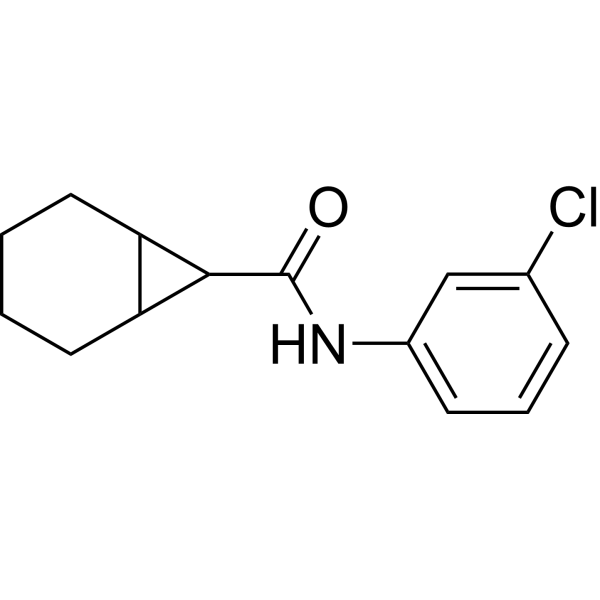
- HY-125374
-
|
XRP9881
|
Apoptosis
|
Cancer
|
|
Larotaxel (XRP9881) is a taxane analogue with preclinical activity against taxane-resistant breast cancer. Larotaxel (XRP9881) exerts its cytotoxic effect by promoting tubulin assembly and stabilizing microtubules, ultimately leading to cell death by apoptosis. It presents the ability to cross the blood brain barrier and has a much lower affinity for P-glycoprotein 1 than Docetaxel .
|
-

- HY-W591476
-
|
mPEG-SH (MW 1000)
|
Liposome
|
Others
|
|
m-PEG-thiol (MW 1000) modifies DNA thiolation for the synthesis of gold nanorods (AuNRs). Thiolated DNA can be loaded onto AuNR by the mPEG-SH/Tween 20 assisted method (Tween 20 and mPEG-SH repeatedly displace CTAB on the AuNR surface). DNA AuNRs have been widely used in nanostructure assembly, gene therapy, biosensing, and drug delivery.
|
-

- HY-W591476A
-
|
mPEG-SH (MW 3400)
|
Liposome
|
Others
|
|
m-PEG-thiol (MW 3400) modifies DNA thiolation for the synthesis of gold nanorods (AuNRs). Thiolated DNA can be loaded onto AuNR by the mPEG-SH/Tween 20 assisted method (Tween 20 and mPEG-SH repeatedly displace CTAB on the AuNR surface). DNA AuNRs have been widely used in nanostructure assembly, gene therapy, biosensing, and drug delivery.
|
-

- HY-W591476B
-
|
mPEG-SH (MW 750)
|
Liposome
|
Others
|
|
m-PEG-thiol (MW 750) modifies DNA thiolation for the synthesis of gold nanorods (AuNRs). Thiolated DNA can be loaded onto AuNR by the mPEG-SH/Tween 20 assisted method (Tween 20 and mPEG-SH repeatedly displace CTAB on the AuNR surface). DNA AuNRs have been widely used in nanostructure assembly, gene therapy, biosensing, and drug delivery.
|
-
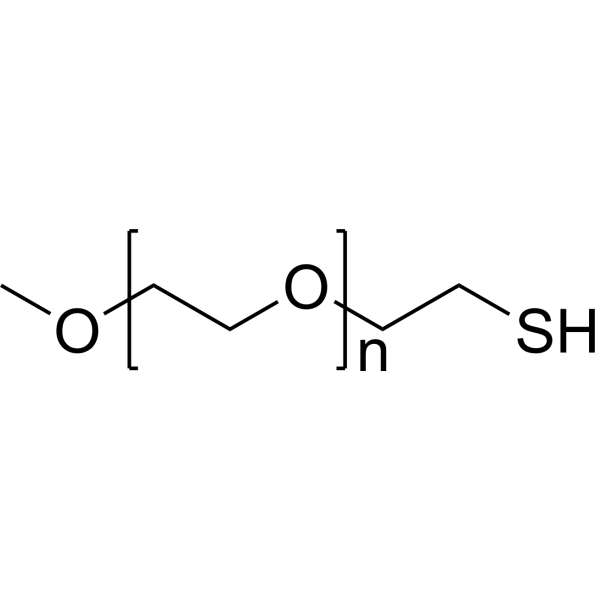
- HY-W591476C
-
|
mPEG-SH (MW 550)
|
Liposome
|
Others
|
|
m-PEG-thiol (MW 550) modifies DNA thiolation for the synthesis of gold nanorods (AuNRs). Thiolated DNA can be loaded onto AuNR by the mPEG-SH/Tween 20 assisted method (Tween 20 and mPEG-SH repeatedly displace CTAB on the AuNR surface). DNA AuNRs have been widely used in nanostructure assembly, gene therapy, biosensing, and drug delivery.
|
-

- HY-W591476D
-
|
mPEG-SH (MW 350)
|
Liposome
|
Others
|
|
m-PEG-thiol (MW 350) modifies DNA thiolation for the synthesis of gold nanorods (AuNRs). Thiolated DNA can be loaded onto AuNR by the mPEG-SH/Tween 20 assisted method (Tween 20 and mPEG-SH repeatedly displace CTAB on the AuNR surface). DNA AuNRs have been widely used in nanostructure assembly, gene therapy, biosensing, and drug delivery.
|
-
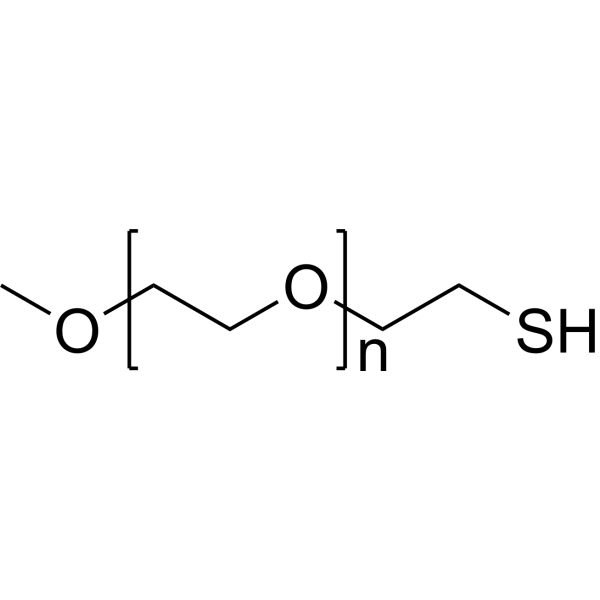
- HY-126020
-
|
|
DNA/RNA Synthesis
RAD51
|
Cancer
|
|
Bractoppin is a potent and selective agent-like inhibitor of phosphopeptide recognition by the human BRCA1 tandem(t) BRCT domain (binding IC50: 74 nM). Bractoppin diminishes BRCA1 recruitment to DNA breaks, in turn suppressing damage-induced G2 arrest and assembly of the recombinase, RAD51. Bractoppin preferentially inhibits BRCA1 tBRCT-dependent steps in the DNA damage response .
|
-
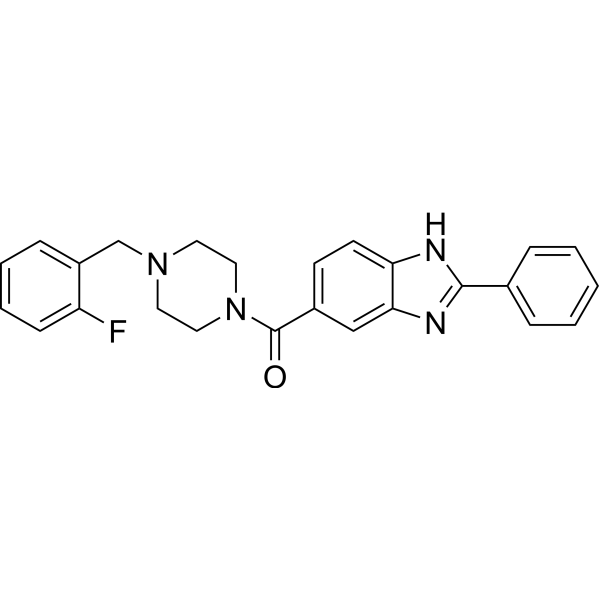
- HY-112163A
-
|
rel-eFT226
|
Eukaryotic Initiation Factor (eIF)
SARS-CoV
Apoptosis
|
Infection
Cancer
|
|
rel-Zotatifin is the racemic isomer of Zotatifin, acts as an eIF4A inhibitor with activity less than Zotatifin. Zotatifin (eFT226) is a potent, selective, and well-tolerated eIF4A inhibitor. Zotatifin promotes eIF4A binding to specific mRNA sequences with recognition motifs in the 5’-UTRs (IC50=2 nM) and interferes with the assembly of the eIF4F initiation complex .
|
-
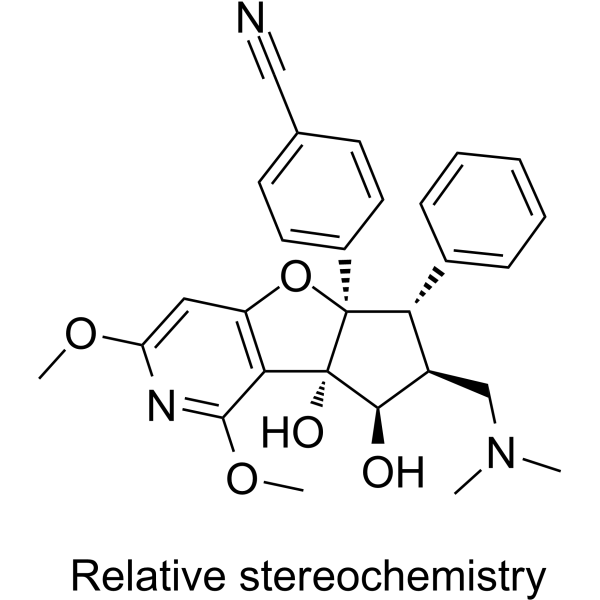
- HY-P5681
-
|
|
Bacterial
|
Infection
Inflammation/Immunology
|
|
Human α-Defensin 6, a 32-residue cysteine-rich peptide, can inhibit bacterial invasion and contribute to the mucosal immunity. Human α-Defensin 6 forms ordered self-assembly fibrils and nanonets that surround and entangle bacteria after stochastic binding to bacterial surface proteins. Human α-Defensin 6 also inhibits C. albicans biofilm formation .
|
-

- HY-158038
-
|
|
Aurora Kinase
|
Cancer
|
|
AurkA allosteric-IN-1 (compound 6h) is an Aurora A (AurkA) inhibitor (IC50: 6.50 μM) that inhibits the catalytic activity and non-catalytic functions of Aurora A. Aurora A regulates the assembly of the bipolar mitotic spindle and the fidelity of chromosome segregation during mitosis and has non-catalytic functions. AurkA allosteric-IN-1 blocks the interaction of AurkA with the activator TPX2 by binding to the Y pocket of AurkA .
|
-
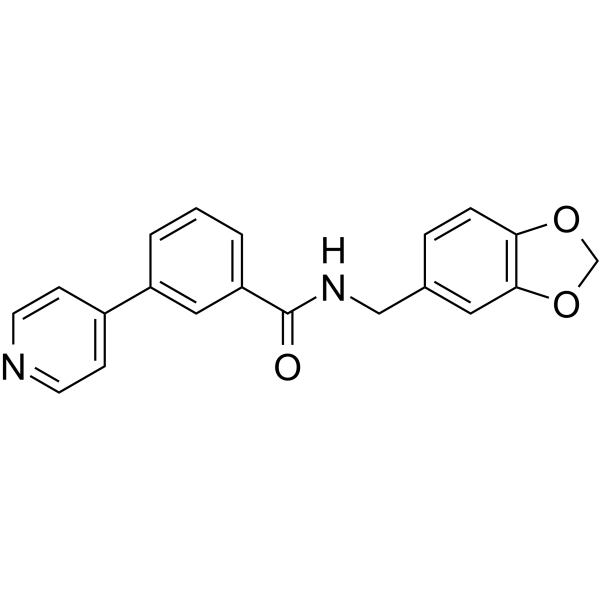
- HY-145827
-
|
|
Microtubule/Tubulin
|
Cancer
|
|
KIF18A-IN-4 is a moderately potent ATP and microtubule (MT) noncompetitive KIF18A inhibitor (IC50=6.16 μM). KIF18A-IN-4 has selectivity against a large panel of mitotic kinesins and kinases, and does not show any direct effects on tubulin assembly. KIF18A-IN-4 exhibits anti-tumor activity .
|
-
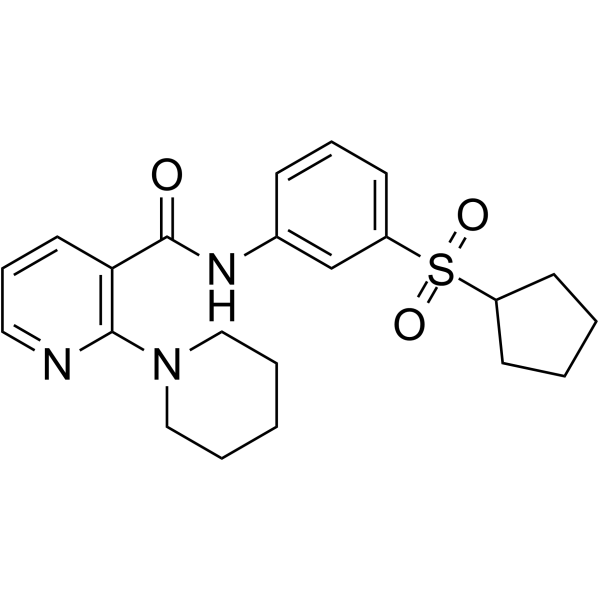
- HY-145785
-
|
|
MDM-2/p53
Apoptosis
|
Cancer
|
|
ADH-6 is a tripyridylamide compound. ADH-6 abrogates self-assembly of the aggregation-nucleating subdomain of mutant p53 DBD. ADH-6 targets and dissociates mutant p53 aggregates in human cancer cells, which restores p53's transcriptional activity, leading to cell cycle arrest and apoptosis. ADH-6 has the potential for the research of cancer diseases[1].
|
-

- HY-W011100
-
-
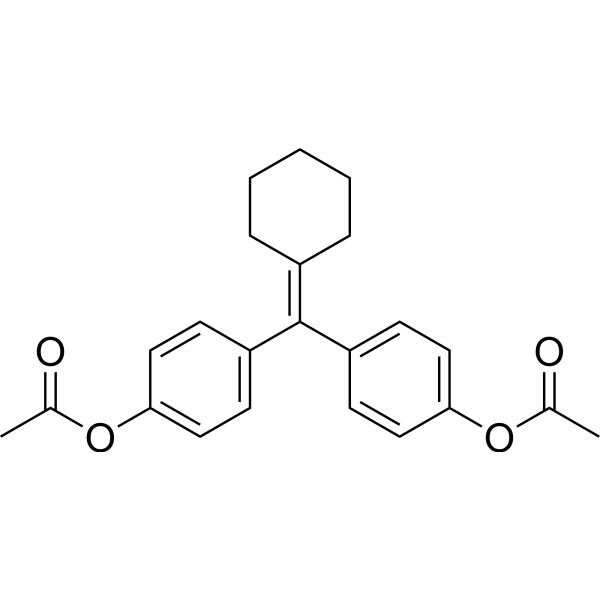
- HY-135960
-
|
|
FGFR
Apoptosis
|
Cancer
|
|
BO-264 is a highly potent and orally active transforming acidic coiled-coil 3 (TACC3) inhibitor with an IC50 of 188 nM and a Kd of 1.5 nM. BO-264 specifically blocks the function of FGFR3-TACC3 fusion protein. BO-264 induces spindle assembly checkpoint (SAC)-dependent mitotic arrest, DNA damage and apoptosis. BO-264 has broad-spectrum antitumor activity .
|
-
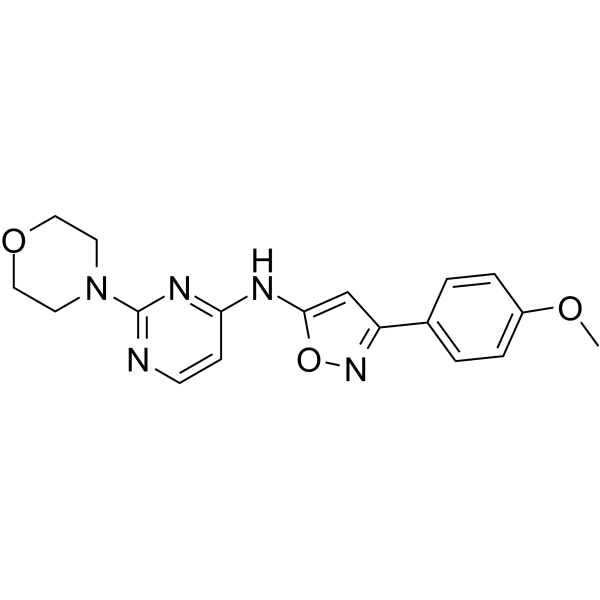
- HY-P1045
-
|
|
Arp2/3 Complex
|
Others
|
|
187-1, N-WASP inhibitor, a 14-aa cyclic peptide, is an allosteric neural Wiskott-Aldrich syndrome protein (N-WASP) inhibitor. 187-1, N-WASP inhibitor potently inhibits actin assembly induced by phosphatidylinositol 4,5-bisphosphate (PIP2) with an IC50 of 2 μM. 187-1, N-WASP inhibitor prevents the activation of Arp2/3 complex by N-WASP by stabilizing the autoinhibited state of the protein .
|
-
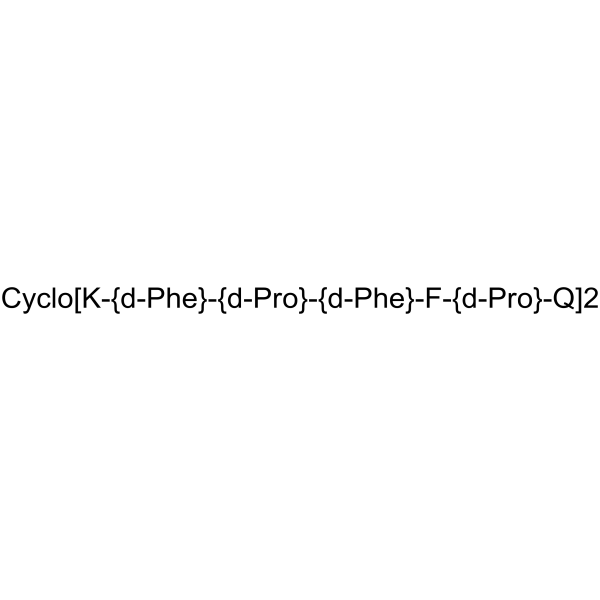
- HY-145785A
-
|
|
MDM-2/p53
Apoptosis
|
Cancer
|
|
ADH-6 TFA is a tripyridylamide compound. ADH-6 abrogates self-assembly of the aggregation-nucleating subdomain of mutant p53 DBD. ADH-6 TFA targets and dissociates mutant p53 aggregates in human cancer cells, which restores p53's transcriptional activity, leading to cell cycle arrest and apoptosis. ADH-6 TFA has the potential for the research of cancer diseases .
|
-

- HY-149763
-
|
|
Amyloid-β
|
Neurological Disease
|
|
Aβ42 agonist-1 (compound 7a) is a small molecule compound that can promote Aβ42 aggregation. Aβ42 agonist-1 can interact with Aβ42 oligomers and pentamers to promote nontoxic aggregate self-assembly and rapid fibril formation. Aβ42 agonist-1 prevents Aβ42-induced cytotoxicity in HT22 hippocampal neuronal cells .
|
-

- HY-B0200R
-
|
Cefalexin (Standard); Cephacillin (Standard)
|
Penicillin-binding protein (PBP)
Antibiotic
Bacterial
|
Infection
Cancer
|
|
Cephalexin (Standard) is the analytical standard of Cephalexin. This product is intended for research and analytical applications. Cephalexin (Cefalexin) is a potent, orally active semisynthetic cephalosporin antibiotic with a broad antibacterial spectrum. Cephalexin has antibacterial activity against a wide variety of gram-positive and gram-negative bacteria. Cephalexin targets penicillin-binding proteins (PBPs) to inhibit bacterial cell wall assembly. Cephalexin is used for the research of pneumonia, strep throat, and bacterial endocarditis, et al .
|
-

- HY-124614
-
GLP-26
1 Publications Verification
|
HBV
|
Infection
|
|
GLP-26 is a HBV capsid assembly modulators (CAM), inhibits HBV DNA replication in Hep AD38 system (IC50=3 nM), and reduces cccDNA by >90% at 1 μM.
GLP-26 disrupts the encapsidation of pre-genomic RNA, causes nucleocapsid disassembly and reduces cccDNA pools . GLP-26 is a click chemistry reagent, it contains an Alkyne group and can undergo copper-catalyzed azide-alkyne cycloaddition (CuAAc) with molecules containing Azide groups.
|
-
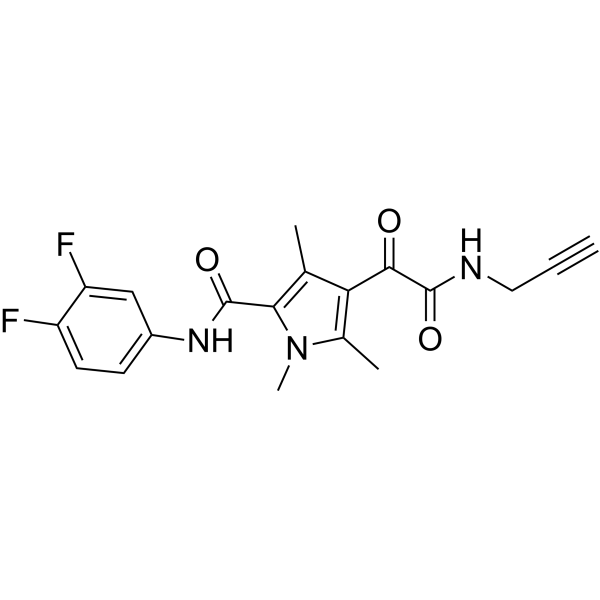
- HY-P1045A
-
|
|
Arp2/3 Complex
|
Others
|
|
187-1, N-WASP inhibitor TFA, a 14-aa cyclic peptide, is an allosteric neural Wiskott-Aldrich syndrome protein (N-WASP) inhibitor. 187-1, N-WASP inhibitor TFA potently inhibits actin assembly induced by phosphatidylinositol 4,5-bisphosphate (PIP2) with an IC50 of 2 μM. 187-1, N-WASP inhibitor TFA prevents the activation of Arp2/3 complex by N-WASP by stabilizing the autoinhibited state of the protein .
|
-
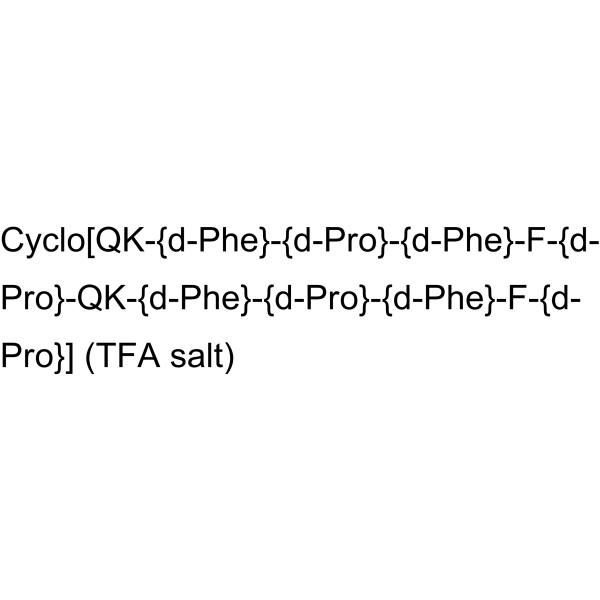
- HY-112163
-
|
eFT226
|
Eukaryotic Initiation Factor (eIF)
SARS-CoV
Apoptosis
|
Infection
Cancer
|
|
Zotatifin (eFT226) is a potent, selective, and well-tolerated eIF4A inhibitor. Zotatifin promotes eIF4A binding to specific mRNA sequences with recognition motifs in the 5’-UTRs (IC50=2 nM) and interferes with the assembly of the eIF4F initiation complex . Zotatifin shows robust antiviral effects, it effectively reduces viral infectivity by inhibiting SARS-CoV-2 NP protein biogenesis (IC90=37 nM) . Zotatifin induces cell apoptosis .
|
-
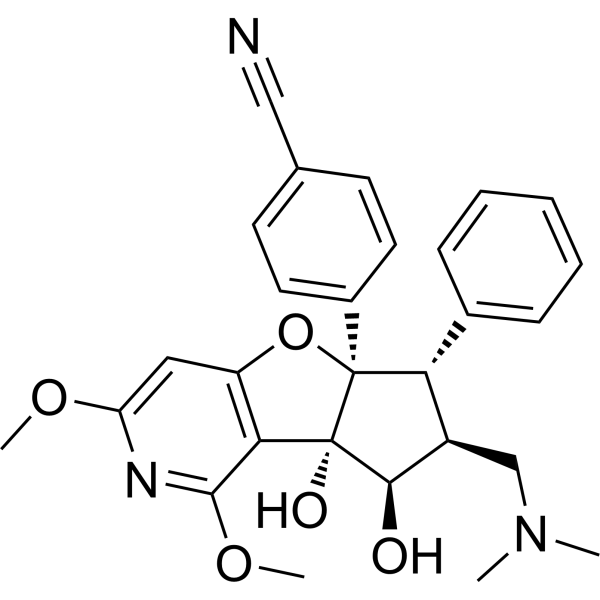
- HY-149764
-
|
|
Amyloid-β
|
Neurological Disease
|
|
Aβ42 agonist-2 (compound 7b) is a small molecule compound that can promote Aβ42 aggregation. Aβ42 agonist-2 can interact with Aβ42 oligomers and pentamers to promote nontoxic aggregate self-assembly and rapid fibril formation. Aβ42 agonist-2 prevents Aβ42-induced cytotoxicity in HT22 hippocampal neuronal cells .
|
-
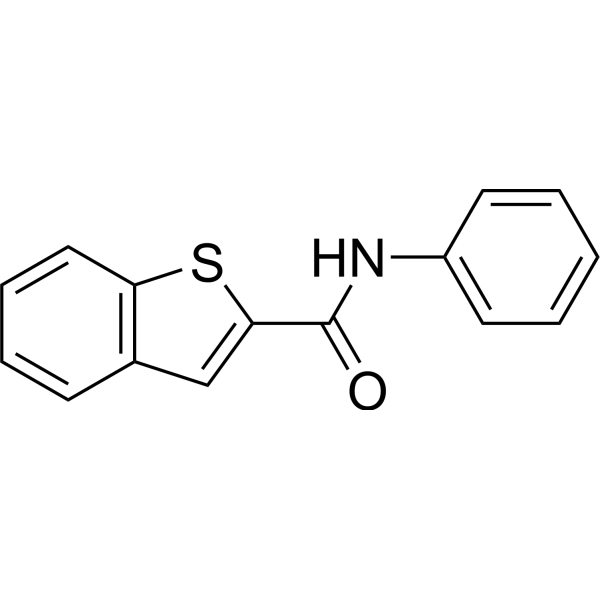
- HY-161072
-
|
|
NOD-like Receptor (NLR)
|
Inflammation/Immunology
|
|
CSC-6 is a NLRP3 inhibitor. CSC-6 can significantly inhibit IL-1β secreted by PMATHP-1 cells with an IC50 value of 2.3 μM. CSC-6 specifically binds NLRP3 and inhibits NLRP3 activation by blocking ASC oligomerization during NLRP3 assembly. CSC-6 effectively reduces the symptoms of NLRP3 overactivation-mediated sepsis and gout in mouse models .
|
-

- HY-149435
-
|
|
HBV
|
Infection
|
|
HBV-IN-36 (compound 42) is a HBV inhibior (IC50=2 μM), showing anti-HBV activity with EC50 of 0.58 μM .
|
-
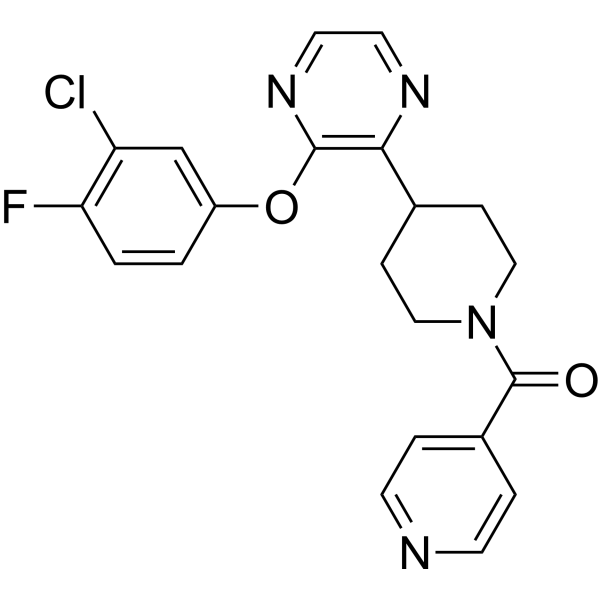
- HY-144634
-
|
|
Keap1-Nrf2
|
Neurological Disease
Inflammation/Immunology
|
|
DDO-7263, a 1,2,4-Oxadiazole derivative, is a potent Nrf2-ARE activator. DDO-7263 upregulates Nrf2 through binding to Rpn6 to block the assembly of 26S proteasome and the subsequent degradation of ubiquitinated Nrf2. DDO-7263 induces Nrf2 translocation into the nucleus. DDO-7263 inhibits of NLRP3 inflammasome activation. DDO-7263 exerts anti-inflammatory activity and has the potential for neurodegenerative diseases research, such as Parkinson's disease (PD) .
|
-
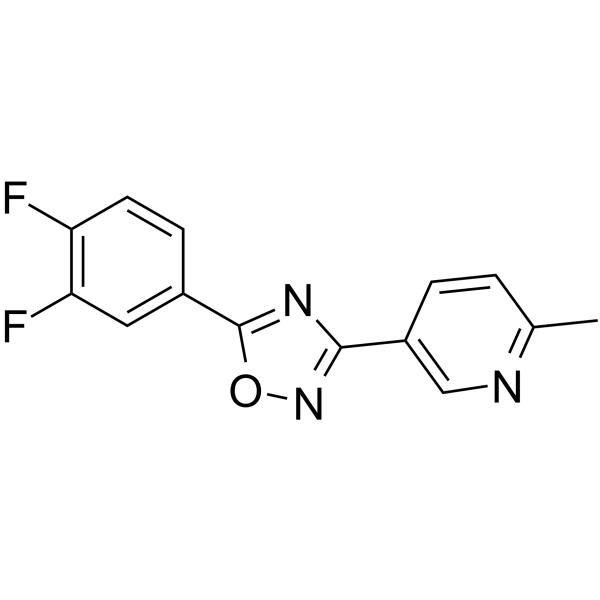
- HY-160478
-
|
|
Bcr-Abl
|
Cancer
|
|
GNF-6 (Compound 14) inhibits the gatekeeper threonine residue mutation of BCR-ABL-T315I with IC50s of 0.25 μM, 0.09 μM and 0.590 μM for c-ABL-T334I, BCR-ABL and BCR-ABL-T315I variants, respectively. GNF-6, an ATP competitive inhibitor, disrupts the assembly of the hydrophobic spine (a network of hydrophobic interactions), thereby locking the kinase in an inactive ‘DFG-out’ conformation .
|
-
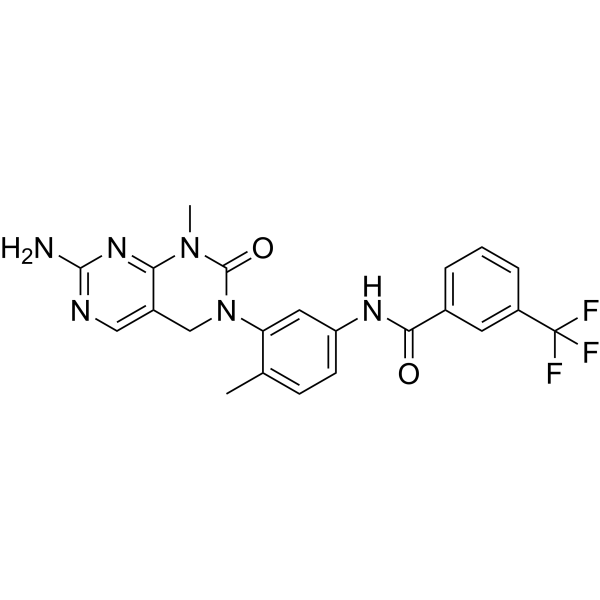
- HY-155112
-
|
|
Microtubule/Tubulin
FLT3
Bcr-Abl
|
Cancer
|
|
Antiproliferative agent-30 (Compound 8g) inhibits tubulin assembly and inhibits FLT3 and Abl1. Antiproliferative agent-30 has vascular-disrupting activity. Antiproliferative agent-30 has broad antiproliferative activities against cancer cell lines (IC50s: 0.054 nM, 0.008 nM, 0.144 nM for HCT-116, K562, MV-4-11 cells respectively). Antiproliferative agent-30 also has anticancer effect against AML with FLT3-ITD-TKD mutation .
|
-
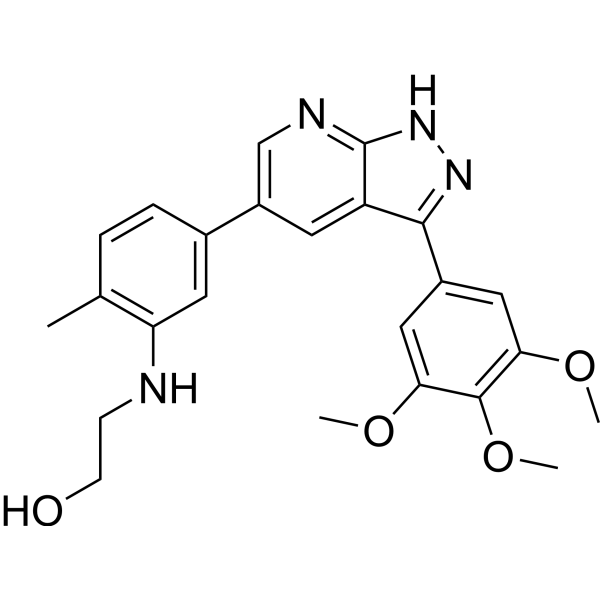
- HY-120072
-
|
PF-74
|
HIV
|
Infection
|
|
PF-3450074 (PF-74) is a specifical inhibitor of HIV-1 capsid protein (CA) and displays a broad-spectrum inhibition of HIV isolates with submicromolar potency (EC50=8-640 nM). PF-3450074 (PF-74) acts at an early stage of HIV-1 infection, inhibits viral replication by directly competing with the binding of CPSF6 and NUP153, and blocks the uncoating, assembly, and the reverse transcription steps of the viral life cycle . CPSF6: nuclear host factors cleavage and polyadenylation specific factor 6; NUP153: nucleoporin 153.
|
-
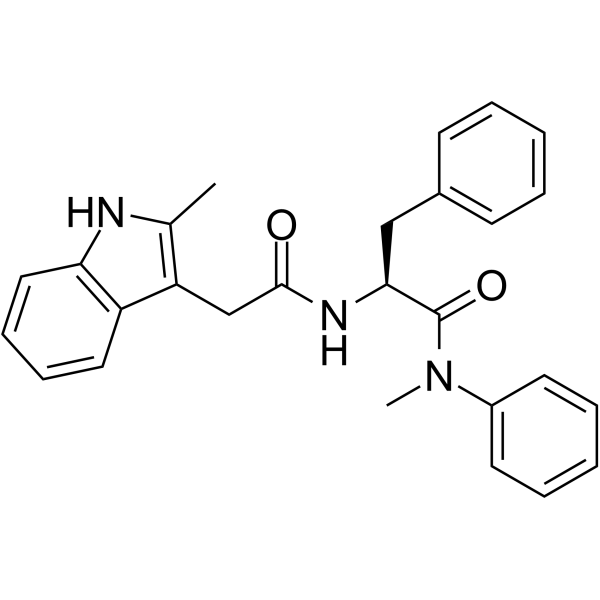
- HY-103241
-
|
|
Amyloid-β
ATM/ATR
Phosphatase
Apoptosis
|
Neurological Disease
Cancer
|
|
Ro 90-7501 is an amyloid β42 (Aβ42) fibril assembly inhibitor that reduces Aβ42-induced cytotoxicity (EC50 of 2 μM). Ro 90-7501 inhibits ATM phosphorylation and DNA repair. RO 90-7501 selectively enhances toll-like receptor 3 (TLR3) and RIG-I-like receptor (RLR) ligand-induced IFN-β gene expression and antiviral response . Ro 90-7501 also inhibits protein phosphatase 5 (PP5) in a TPR-dependent manner . Ro 90-7501 has significant radiosensitizing effects on cervical cancer cells .
|
-
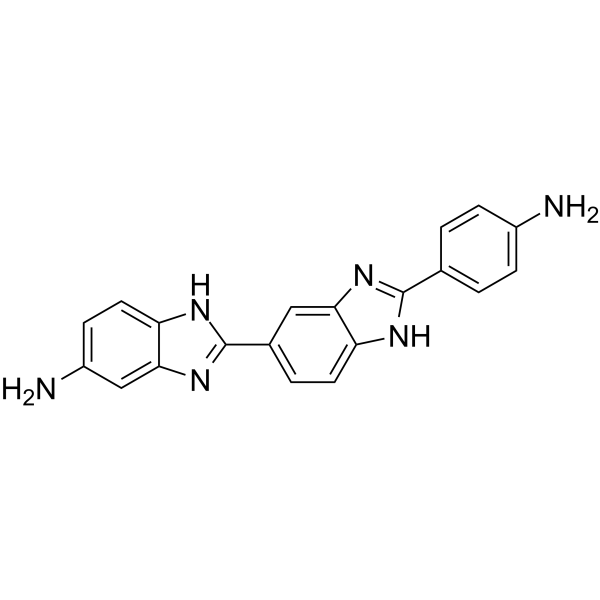
- HY-161329
-
|
|
NOD-like Receptor (NLR)
Reactive Oxygen Species
NF-κB
IKK
|
Inflammation/Immunology
|
|
NLRP3-IN-32 (compound 7a), a 3, 4-dihydronaphthalene-1(2H)-one derivative, is a potential NLRP3 inflammatory vesicles inhibitor. NLRP3-IN-32 can block the assembly and activation of NLRP3 inflammasome by down-regulating the expression of NLPR3 and apoptosis-associated speck-like protein containing a CARD (ASC), and inhibiting the production of reactive oxygen species (ROS) and other inflammatory mediators. NLRP3-IN-32 inhibits the phosphorylation of IκBα and NF-κB/p65 and the nuclear translocation of p65, thereby inhibiting NF-κB signaling .
|
-
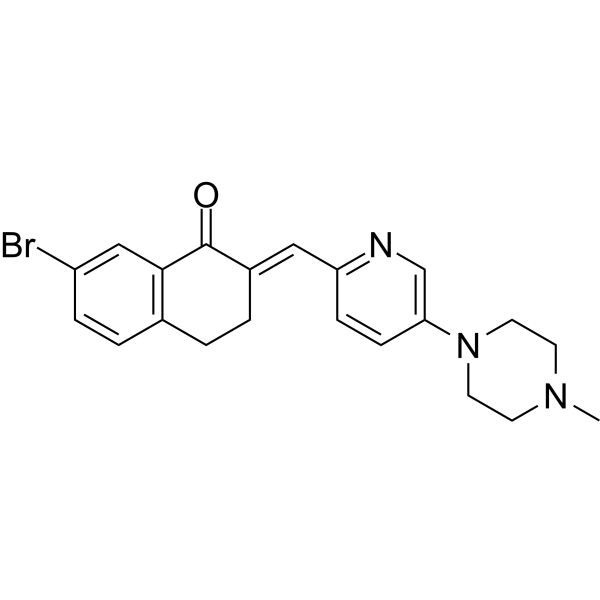
- HY-153736
-
|
|
Others
|
Cancer
|
|
NSC 194308, a U2AF2-RNA complexes enhancer, increases association of the U2AF1-U2AF2-SF1-splice site RNA complex by binding a site between the U2AF2 RNA recognition motifs (RRM1 and RRM2). NSC 194308 inhibits pre-mRNA splicing by stalling spliceosome assembly at the point where U2AF helps recruit U2 snRNP to the branchpoint. NSC 194308 enhances the binding of pre-mRNA to U2AF2, selectively triggering cell death in leukemia cell lines containing spliceosome mutations .
|
-
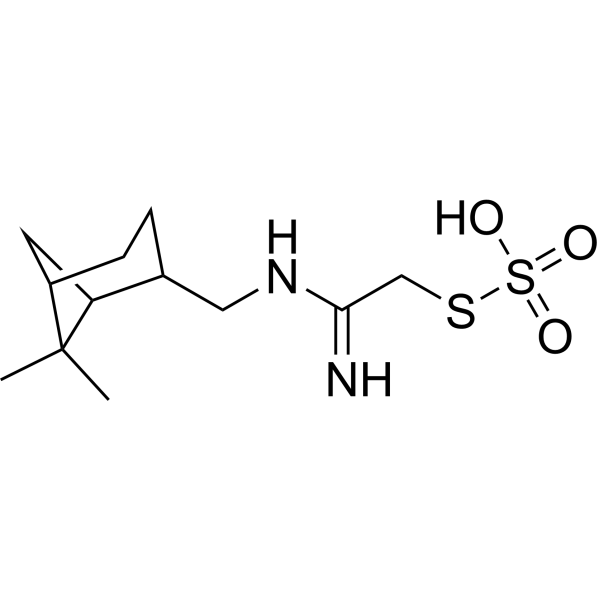
- HY-151341
-
|
|
HIF/HIF Prolyl-Hydroxylase
|
Cancer
|
|
HIF-1/2α-IN-1 is an orally active HIF-2α inhibitor. HIF-1/2α-IN-1 inhibits HIF-2α activity with an IC50 value of 0.92 μM. HIF-1/2α-IN-1 also can decrease HIF-1α levels. HIF-1/2α-IN-1 can be used for the research of clear cell renal cell carcinoma (ccRCC) .
|
-
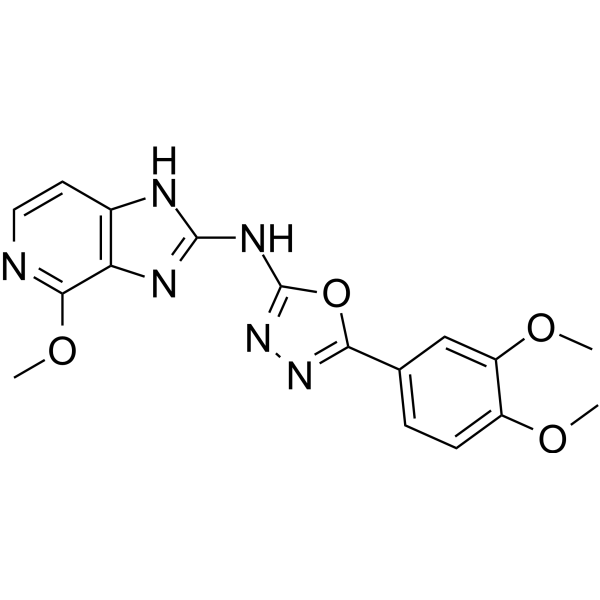
| Cat. No. |
Product Name |
Type |
-
- HY-W127703
-
|
|
Fluorescent Dyes/Probes
|
|
Octadecyl Rhodamine B chloride is a cationic amphiphile that can be used for staining cell membranes. Octadecyl Rhodamine B chloride can be used in numerous studies including electronic energy transfer in organized molecular assemblies, membrane structure, and distances of closest approach between protein domains and membranes .
|
-
- HY-133821
-
|
|
Fluorescent Dyes/Probes
|
|
N-Methylmesoporphyrin IX (NMM), a widely used G-quadruplex DNA specific fluorescent binder, is an efficient probe for monitoring Aβ fibrillation. N-Methylmesoporphyrin IX is an in situ inhibitor and an ex situ monitor for Aβ amyloidogenesis both in vitro and in cells. N-Methylmesoporphyrin IX is sensitive to G-quadruplexes DNA but has no response to duplexes, triplexes and single-stranded forms DNA. N-Methylmesoporphyrin IX is nonfluorescent alone or in monomeric Aβ environments, but emits strong fluorescence through stacking with the Aβ assemblies .
|
-
- HY-W073524
-
|
|
Fluorescent Dyes/Probes
|
|
DFAME is a red fluorophore (Ex=508 nm, Em=641 nm). Beetroot and Corn are dimeric fluorogenic RNA aptamers that can bind to DFAME to form Beetroot-DFAME (Kd=460nM) and Corn-DFAME (Kd= 3600nM). Beetroot-DFAME (Kd=460nM) and Corn-DFAME can be used to form RNA assemblies in living cells. Creating RNA assemblies can be used for the study of RNA Nanostructures. DNA/RNA Nanostructures would be useful in cell and gene therapy (CGT) research .
|
| Cat. No. |
Product Name |
Type |
-
- HY-112763
-
|
|
Drug Delivery
|
|
CLinDMA, a cationic lipid, can cause inflammatory response. CLinDMA can be used for the synthesis LNP201. LNP201 is a liposome assembly for systemic delivery of siRNA .
|
-
- HY-W591476
-
|
mPEG-SH (MW 1000)
|
Drug Delivery
|
|
m-PEG-thiol (MW 1000) modifies DNA thiolation for the synthesis of gold nanorods (AuNRs). Thiolated DNA can be loaded onto AuNR by the mPEG-SH/Tween 20 assisted method (Tween 20 and mPEG-SH repeatedly displace CTAB on the AuNR surface). DNA AuNRs have been widely used in nanostructure assembly, gene therapy, biosensing, and drug delivery.
|
-
- HY-W751932
-
|
|
Biochemical Assay Reagents
|
|
Carboxy-EG6-undecanethiol is an alkanethiol that suitable for self-assembly a gold thin-film substrate. Carboxy-EG6-undecanethiol can selectively capture HbA1c in sample by covalent coupling of 3-aminophenyl boronic acid (3-APBA) .
|
-
- HY-W591476A
-
|
mPEG-SH (MW 3400)
|
Drug Delivery
|
|
m-PEG-thiol (MW 3400) modifies DNA thiolation for the synthesis of gold nanorods (AuNRs). Thiolated DNA can be loaded onto AuNR by the mPEG-SH/Tween 20 assisted method (Tween 20 and mPEG-SH repeatedly displace CTAB on the AuNR surface). DNA AuNRs have been widely used in nanostructure assembly, gene therapy, biosensing, and drug delivery.
|
-
- HY-W591476B
-
|
mPEG-SH (MW 750)
|
Drug Delivery
|
|
m-PEG-thiol (MW 750) modifies DNA thiolation for the synthesis of gold nanorods (AuNRs). Thiolated DNA can be loaded onto AuNR by the mPEG-SH/Tween 20 assisted method (Tween 20 and mPEG-SH repeatedly displace CTAB on the AuNR surface). DNA AuNRs have been widely used in nanostructure assembly, gene therapy, biosensing, and drug delivery.
|
-
- HY-W591476C
-
|
mPEG-SH (MW 550)
|
Drug Delivery
|
|
m-PEG-thiol (MW 550) modifies DNA thiolation for the synthesis of gold nanorods (AuNRs). Thiolated DNA can be loaded onto AuNR by the mPEG-SH/Tween 20 assisted method (Tween 20 and mPEG-SH repeatedly displace CTAB on the AuNR surface). DNA AuNRs have been widely used in nanostructure assembly, gene therapy, biosensing, and drug delivery.
|
-
- HY-W591476D
-
|
mPEG-SH (MW 350)
|
Drug Delivery
|
|
m-PEG-thiol (MW 350) modifies DNA thiolation for the synthesis of gold nanorods (AuNRs). Thiolated DNA can be loaded onto AuNR by the mPEG-SH/Tween 20 assisted method (Tween 20 and mPEG-SH repeatedly displace CTAB on the AuNR surface). DNA AuNRs have been widely used in nanostructure assembly, gene therapy, biosensing, and drug delivery.
|
| Cat. No. |
Product Name |
Target |
Research Area |
-
- HY-P4192
-
|
|
ADC Linker
|
Cancer
|
|
Fomc-Gly-Gly-Phe-Gly-OH (compound D5) can be used as an intermediate in the synthesis of ADC dual-drug-linker. Fomc-Gly-Gly-Phe-Gly-OH synthetic intermediate GGFGE further forms an important ADC dual-drug link assembly unit .
|
-
- HY-P0306
-
|
Heparin Binding Peptide
|
Peptides
|
Cardiovascular Disease
|
|
Fibronectin Adhesion-promoting Peptide (Heparin Binding Peptide) is one of the heparin-binding amino acid sequences found in the carboxy-terminal heparin-binding domain of fibronectin. It promotes assembly of mesenchymal stem cell (MSC) spheroids into larger aggregates. Fibronectin Adhesion-promoting Peptide directly promotes the adhesion, spreading, and migration of endothelial cells by reacting with heparin binding domains of cells .
|
-
- HY-P0306A
-
|
Heparin Binding Peptide TFA
|
Peptides
|
Cardiovascular Disease
|
|
Fibronectin Adhesion-promoting Peptide (Heparin Binding Peptide) is one of the heparin-binding amino acid sequences found in the carboxy-terminal heparin-binding domain of fibronectin. It promotes assembly of mesenchymal stem cell (MSC) spheroids into larger aggregates. Fibronectin Adhesion-promoting Peptide directly promotes the adhesion, spreading, and migration of endothelial cells by reacting with heparin binding domains of cells .
|
-
- HY-P5381
-
|
|
NADPH Oxidase
|
Others
|
|
gp91 ds-tat is a biological active peptide. (NADPH oxidase assembly peptide inhibitor)
|
-
- HY-P3244
-
|
|
Amyloid-β
|
Neurological Disease
|
|
D-KLVFFA is the inhibitor of Amyloid-β assembly, with the IC50 of 2.6 μM, that can be used in Alzheimer's disease study .
|
-
- HY-P1449
-
|
|
ADC Linker
|
Cancer
|
|
Boc-Gly-Gly-Phe-Gly-OH, a self-assembly of N- and C-protected tetrapeptide, is a protease cleavable linker used for the antibody-drug conjugate (ADC).
|
-
- HY-P10188
-
|
|
Peptides
|
Cardiovascular Disease
|
|
apoB (4372-4392) is a potent lipoprotein(a) assembly inhibitor, with an IC50 of 40 μM. apoB (4372-4392) can noncovalently bind to apolipoprotein(a) with high affinity .
|
-
- HY-P1449A
-
|
|
ADC Linker
|
Cancer
|
|
Boc-Gly-Gly-Phe-Gly-OH TFA, a self-assembly of N- and C-protected tetrapeptide, is a protease cleavable linker used for the antibody-drug conjugate (ADC).
|
-
- HY-P4808
-
|
|
Amyloid-β
|
Neurological Disease
|
|
PHF6 (VQIVYK) is a self-assembly sequence capable of initiating the full-length tau protein aggregation and is mapped to the third microtubule-binding repeat region of the tau protein .
|
-
- HY-P2203A
-
|
|
Notch
|
|
|
SAHM1 TFA is a Notch pathway inhibitor. SAHM1 TFA stabilizes hydrocarbon-stapled alpha helical peptide. SAHM1 TFA targets the protein-protein interface and prevents Notch complex assembly.
|
-
- HY-P3926
-
|
hIAPP (8-37)
|
Amylin Receptor
|
Metabolic Disease
|
|
Amylin (8-37) (human) (hIAPP (8-37)) is a 8-37 fragment of human islet amyloid polypeptide (IAPP). The duplex folding structure in the Amylin (8-37) (human) assembly has a hairpin structure .
|
-
- HY-P4147
-
|
|
Peptides
|
Others
|
|
Ac-IHIHIQI-NH2 is a fibril-forming heptapeptide with high catalytic activity to laccase mimics. Ac-IHIHIQI-NH2 exhibits selectivity for hydrophobic p-nitrophenyl (ONp) ester substrates in the process of self-assembly .
|
-
- HY-P1826
-
|
|
Peptides
|
Inflammation/Immunology
Cancer
|
|
CLIP (86-100) is amino acids 86 to 100 fragment of class II-associated invariant chain peptide (CLIP). CLIP is a small self-peptide and cleavage product of the invariant chain that resides in the HLA-II antigen binding groove and is believed to play a critical role in the assembly and transport of MHC class II alphabetaIi complexes through its interaction with the class II peptide-binding site .
|
-
- HY-P1826A
-
|
|
Peptides
|
Inflammation/Immunology
Cancer
|
|
CLIP (86-100) TFA is amino acids 86 to 100 fragment of class II-associated invariant chain peptide (CLIP). CLIP is a small self-peptide and cleavage product of the invariant chain that resides in the HLA-II antigen binding groove and is believed to play a critical role in the assembly and transport of MHC class II alphabetaIi complexes through its interaction with the class II peptide-binding site .
|
-
- HY-P5681
-
|
|
Bacterial
|
Infection
Inflammation/Immunology
|
|
Human α-Defensin 6, a 32-residue cysteine-rich peptide, can inhibit bacterial invasion and contribute to the mucosal immunity. Human α-Defensin 6 forms ordered self-assembly fibrils and nanonets that surround and entangle bacteria after stochastic binding to bacterial surface proteins. Human α-Defensin 6 also inhibits C. albicans biofilm formation .
|
-
- HY-P1045
-
|
|
Arp2/3 Complex
|
Others
|
|
187-1, N-WASP inhibitor, a 14-aa cyclic peptide, is an allosteric neural Wiskott-Aldrich syndrome protein (N-WASP) inhibitor. 187-1, N-WASP inhibitor potently inhibits actin assembly induced by phosphatidylinositol 4,5-bisphosphate (PIP2) with an IC50 of 2 μM. 187-1, N-WASP inhibitor prevents the activation of Arp2/3 complex by N-WASP by stabilizing the autoinhibited state of the protein .
|
-
- HY-P1045A
-
|
|
Arp2/3 Complex
|
Others
|
|
187-1, N-WASP inhibitor TFA, a 14-aa cyclic peptide, is an allosteric neural Wiskott-Aldrich syndrome protein (N-WASP) inhibitor. 187-1, N-WASP inhibitor TFA potently inhibits actin assembly induced by phosphatidylinositol 4,5-bisphosphate (PIP2) with an IC50 of 2 μM. 187-1, N-WASP inhibitor TFA prevents the activation of Arp2/3 complex by N-WASP by stabilizing the autoinhibited state of the protein .
|
-
- HY-KE7048
-
|
|
|
BspQ I is one of the endonucleases of Type IIs that recognize non-palindromic sequences and cut outside of the recognition sequence, and is commonly used in Golden Gate assembly. Isoschizomers: Sap I, Lgu I, PciS I.
|
-
- HY-KE7050
-
|
|
|
BsmB I is one of the endonucleases of Type IIs that recognize non-palindromic sequences and cut outside of the recognition sequence, and is commonly used in Golden Gate assembly. Isoschizomers: Esp3 I, BstGZ53 I, Esp16 I, Esp23 I.
|
-
- HY-K1041
-
|
|
|
MCE Seamless DNA Assembly Plus Kit contains an optimized mix of recombinase, reaction buffer, and additional cofactors that significantly improve the cloning efficiency and tolerance to impurities. This product can complete multiple DNA fragments recombination and takes only 5 minutes for single fragment, and the positive rate is more than 95%.
|
| Cat. No. |
Product Name |
Target |
Research Area |
-
- HY-P9932
-
|
ETI 204
|
Inhibitory Antibodies
|
Infection
|
|
Obiltoxaximab is a potent anti-protective antigen (PA) monoclonal antibody. Obiltoxaximab plays a central role in anthrax toxin assembly and target cell intoxication. Obiltoxaximab can be used in animal‐to‐human dose translation for research of inhalational anthrax .
|
| Cat. No. |
Product Name |
Category |
Target |
Chemical Structure |
| Cat. No. |
Product Name |
Chemical Structure |
-
- HY-113061S
-
|
|
|
Pseudouridine- 18O is the 18O labeled Pseudouridine (HY-113061). Pseudouridine is an isomer of the nucleoside uridine, and the most abundant modified nucleoside in non-coding RNAs. Pseudouridine in rRNA and tRNA can fine-tune and stabilize the regional structure and help maintain their functions in mRNA decoding, ribosome assembly, processing and translation.
|
-

-
- HY-15552S
-
|
|
|
Podofilox-d6 is the deuterium labeled Podofilox. Podofilox (Podophyllotoxin) is a potent inhibitor of microtubule assembly and DNA topoisomerase II[1][2].
|
-

-
- HY-115364S
-
|
|
|
Parbendazole-d3 is the deuterium labeled Parbendazole. Parbendazole is a potent inhibitor of microtubule assembly, destabilizes tubulin, with an EC50 of 530 nM, and exhibits a broad-spectrum anthelmintic activity.
|
-

| Cat. No. |
Product Name |
|
Classification |
-
- HY-116423
-
|
|
|
Alkynes
|
|
JH295 is a potent, irreversible and selective NIMA-related kinase 2 (Nek2) inhibitor with an IC50 of 770 nM. JH295 inhibits cellular Nek2 via alkylation of Cys22. JH295 is inactive against the mitotic kinases, Cdk1, Aurora B or Plk1, and does not perturb bipolar spindle assembly or the spindle assembly checkpoint . JH295 is a click chemistry reagent, it contains an Alkyne group and can undergo copper-catalyzed azide-alkyne cycloaddition (CuAAc) with molecules containing Azide groups.
|
-
- HY-124614
-
GLP-26
1 Publications Verification
|
|
Alkynes
|
|
GLP-26 is a HBV capsid assembly modulators (CAM), inhibits HBV DNA replication in Hep AD38 system (IC50=3 nM), and reduces cccDNA by >90% at 1 μM.
GLP-26 disrupts the encapsidation of pre-genomic RNA, causes nucleocapsid disassembly and reduces cccDNA pools . GLP-26 is a click chemistry reagent, it contains an Alkyne group and can undergo copper-catalyzed azide-alkyne cycloaddition (CuAAc) with molecules containing Azide groups.
|
-
- HY-116423A
-
|
|
|
Alkynes
|
|
JH295 hydrate is a potent, irreversible and selective NIMA-related kinase 2 (Nek2) inhibitor with an IC50 of 770 nM. JH295 hydrate inhibits cellular Nek2 via alkylation of Cys22. JH295 hydrate is inactive against the mitotic kinases, Cdk1, Aurora B or Plk1, and does not perturb bipolar spindle assembly or the spindle assembly checkpoint . JH295 (hydrate) is a click chemistry reagent, it contains an Alkyne group and can undergo copper-catalyzed azide-alkyne cycloaddition (CuAAc) with molecules containing Azide groups.
|
Your information is safe with us. * Required Fields.
Inquiry Information
- Product Name:
- Cat. No.:
- Quantity:
- MCE Japan Authorized Agent:




































































































































